Unveiling 21 Jewels in Samtskhe-Javakheti: Georgia’s Partially Undiscovered Region
Snuggled amid the breathtaking landscapes of Georgia lies a hidden gem – the Samtskhe-Javakheti region. Rich in history, culture, and natural splendor, this captivating region is a tapestry of ancient fortresses, vibrant traditions, and majestic mountains. Time seems to slow down here, allowing travelers to immerse themselves in a world where the past and present harmoniously coexist.
I have visited Samtskhe-Javakheti a few times now, and it never stops to amaze me with its mystery and wonder, where I discover something new at every step. This detailed Samtkshe-Javakheti guide includes everything you need to know about the region, what to see, its cuisine, and general tips.
My Travel Essentials
Get an eVisa: Check if you need one at iVisa and fill out the form to get your eVisa easily.
Book a flight: I use Skyscanner or WayAway. The latter offers cashback with a Plus membership.
Airport transfers: Avoid the hassle of public transport and pre-book a transfer with Gotrip.
Reserve a hotel: My go-to platform for hotels or apartments is Booking.com.
Wine tours: Eat This! Tours offer premium wine tours. Use code RFD5 to get 5% OFF.
Hiking & culture tours: WT Georgia is the best for unique trips. Email them Red Fedora & get 10% OFF.
Find best-suited tours: For other tours, entrance tickets, and activities, I use Viator or Get Your Guide.
Rent a car: With affordable prices, Local Rent is one of the best car rental platforms.
Hire a driver: GoTrip is ideal for long-distance private transfers at very reasonable prices.
Debit card: I have Wise (an alternative to Revolut) for local money withdrawals without hidden fees or high exchange rates.
eSIM: To avoid heavy roaming fees, use Airalo or Saily. Compare prices and GB packages. Use BAIA2592 on Airalo and BAIAIR6152 on Saily to get 3 USD on both.
Travel insurance: SafetyWing covers health insurance and has add-ons for adventure sports and electronics theft coverage.
Disclaimer: Some of the links in this post are affiliate links, which means I may earn a small commission if you buy something through them—at no extra cost to you. It helps support my blog and lets me share real, first-hand travel tips. Learn more
Why visit Samtskhe-Javakheti?
Encompassing an impressive expanse of 6,421 sq. km and accounting for 9.2 percent of Georgia’s territory, the region of Samtskhe-Javakheti unfolds in a varied terrain that spans altitudes from 1,000 to 3,300 meters above sea level.
Akhaltsikhe, an administrative center representing the essence of Samtskhe-Javakheti’s rich history and vibrant culture, is the heart of this enchanting region.

Historically, Samtskhe-Javakheti covers three provinces: Meskheti, Javakheti, and Tori, each contributing to the region’s unique appeal and character. These ancient provinces form diverse stories, traditions, and legacies that make Samtskhe-Javakheti one of the best places to visit in Georgia for a genuinely unforgettable experience.
The area of Tori, today’s Borjomi area, is abundant with verdant greenery, whereas Meskheti consists of rough valleys and towering mountain summits. Javakheti, an elevated volcanic plateau in the southern part, stands out with its dozens of lakes and migratory birds, making it particularly astonishing.
Now cradled between the southern borders of Armenia and Turkey’s western and southwestern boundaries, this region also finds itself at an extraordinary crossroads of cultures and histories.
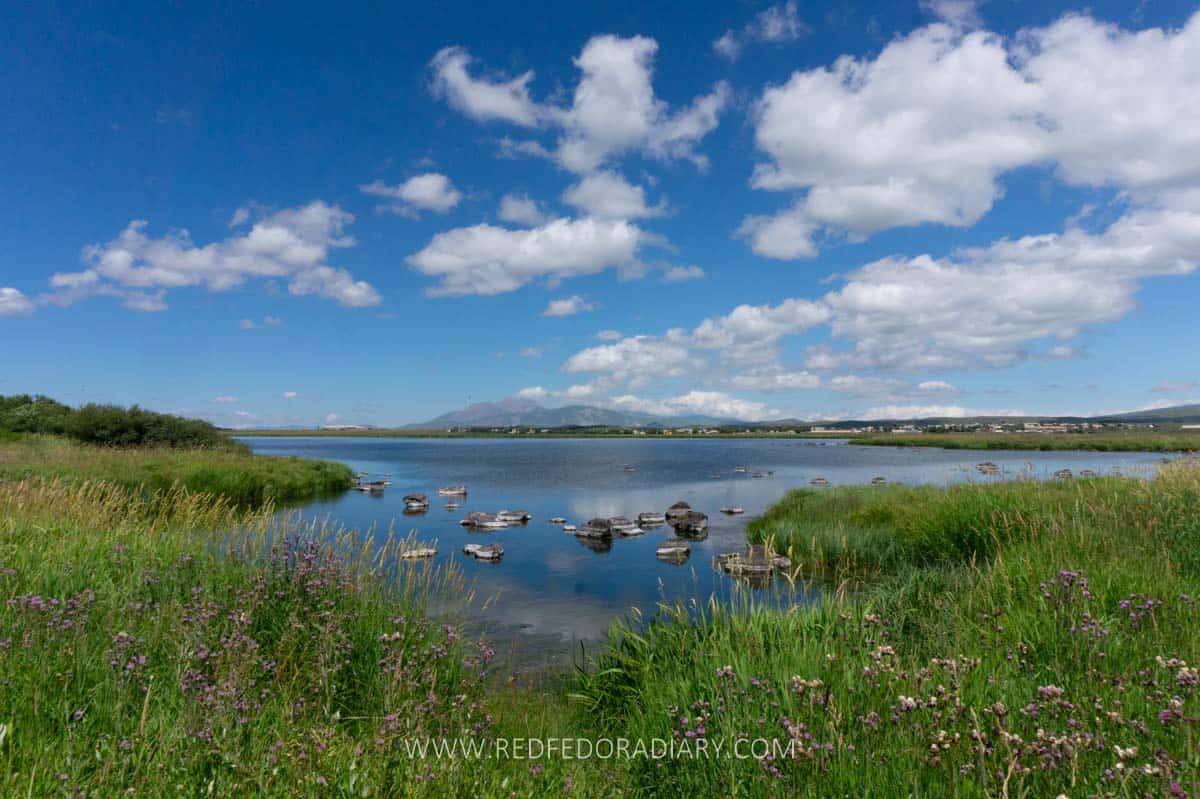
Turkey eventually conquered Samtskhe in the 16th century, and while parts returned to Georgia in the 19th century, some territories still lie within Turkey’s borders.
Javakheti, documented as Zabakha in ancient sources, played a pivotal role in the Kingdom of Kartli. It endured Ottoman occupation in the 16th century, leading to the migration of Georgian populations to inner regions, while some locals were forced to convert to Islam. Later, Russians and Armenians settled in the area in the 19th and 20th centuries.
From the 1820s, Armenian families comprised a significant portion of the region’s population until today. Similar to the Kvemo Kartli region, Russian is the primary language here. There have been programs to help Armenian and Azerbaijani families throughout Georgia to help them learn the local language.
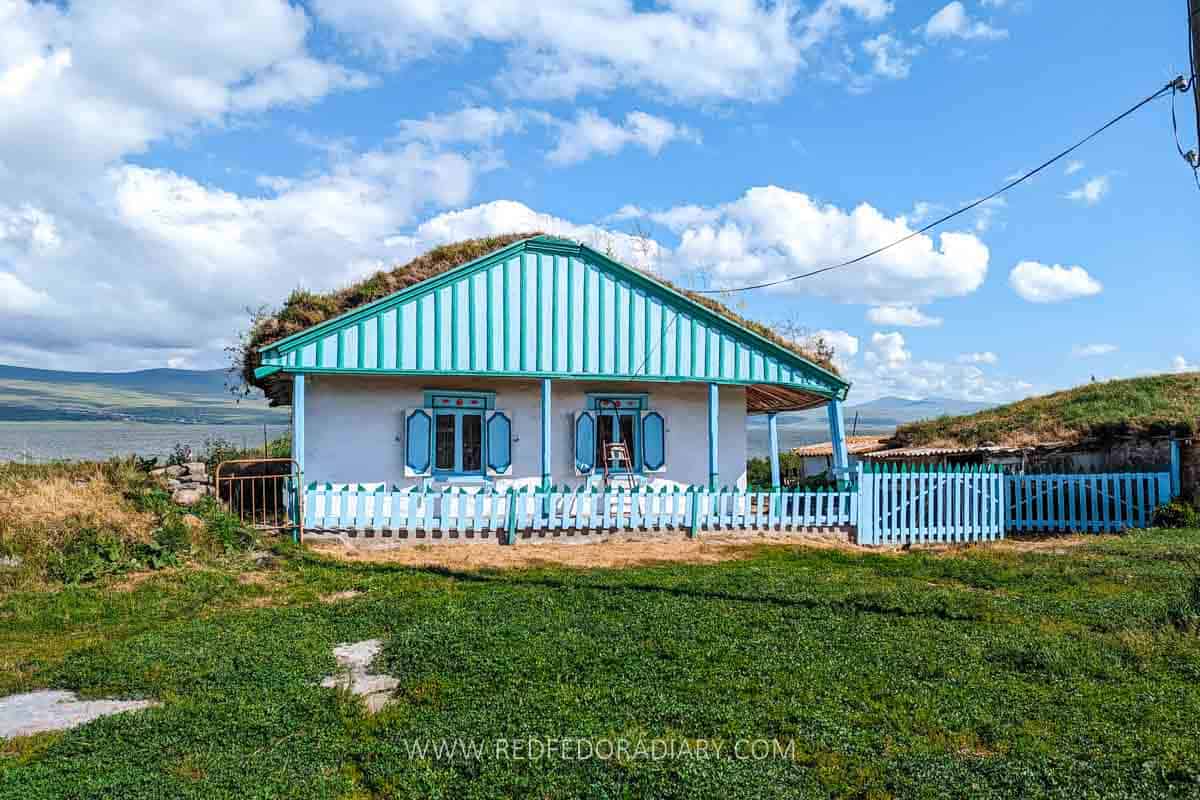
Over the years, the region has also been inhabited by migrants from Svaneti, Adjara, and other areas of Georgia. Javakheti is also home to a small ethnic group of Doukhobors, one group that astonishes me the most (more on them below).
Additionally, the Muslim minority known as Meskhetian Turks have likely been residents of this area since the 12th century. At some point in history, Meskheti reached Kars and Artvin in Turkey, encompassing parts of Armenia’s Shirak Province.
During the Soviet era, the government forced Meskhetian Turks and other minority groups to move out of Georgia, sending them into exile in Central Asia. While the majority never returned, their customs and traditions survived until today.
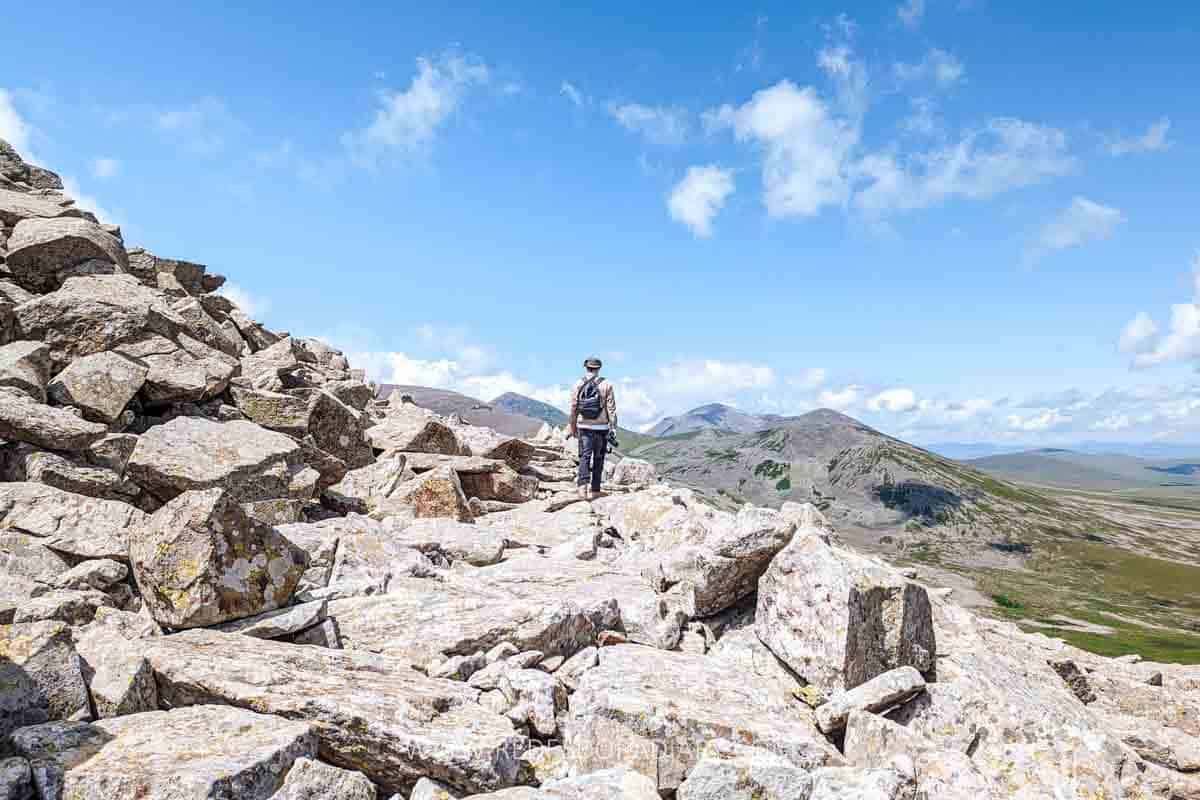
Currently, the Samtskhe-Javakheti region includes several municipalities – Akhaltsikhe, Adigeni, Aspindza, Akhalkalaki, Ninotsminda, and Borjomi. It also is at a crucial regional energy and transportation network intersection.
The renowned Baku-Tbilisi-Ceyhan oil pipeline, the South Caucasus natural gas pipeline, and the Kars-Tbilisi-Baku railway traverse this land, sealing its position as a vital hub connecting Turkey and Azerbaijan with Europe, the Middle East, and other destinations.
Besides its historical significance, Samtskhe-Javakheti is also praised for its native architectural style – Darbazuli, a chamber with a unique roof structure known; the local cuisine with specialties such as tenili cheese (string cheese) and apokhti (dried meat), among other delectables, and untamed terrains, spanning from the Javakheti Plateau’s more than 70 lakes to the dense forests of Borjomi-Kharagauli National Park.
Samtskhe-Javakheti Map
For a more comfortable way of exploring the region, here is the Google Maps list of all the things to do in Samskhe-Javalkheti for you to save and use whenever you need it. If you download the area for offline use, you will not need the data to access the spots
21 things to do in Samtskhe-Javakheti
I visited some of the places mentioned in this article as part of the press trip organized by Samtskhe-Javakheti DMO; however, all the opinions are, as always, my own.
Wander through Akhaltsikhe Castle, a.k.a Rabati Castle
Akhaltsikhe, the central town of Samtskhe-Javakheti, is home to one of the most important historical landmarks in Georgia – Akhaltsikhe Castle, which is often misnomered as Rabati Fortress because of its location in Rabati quarter, a former Jewish and trading district.
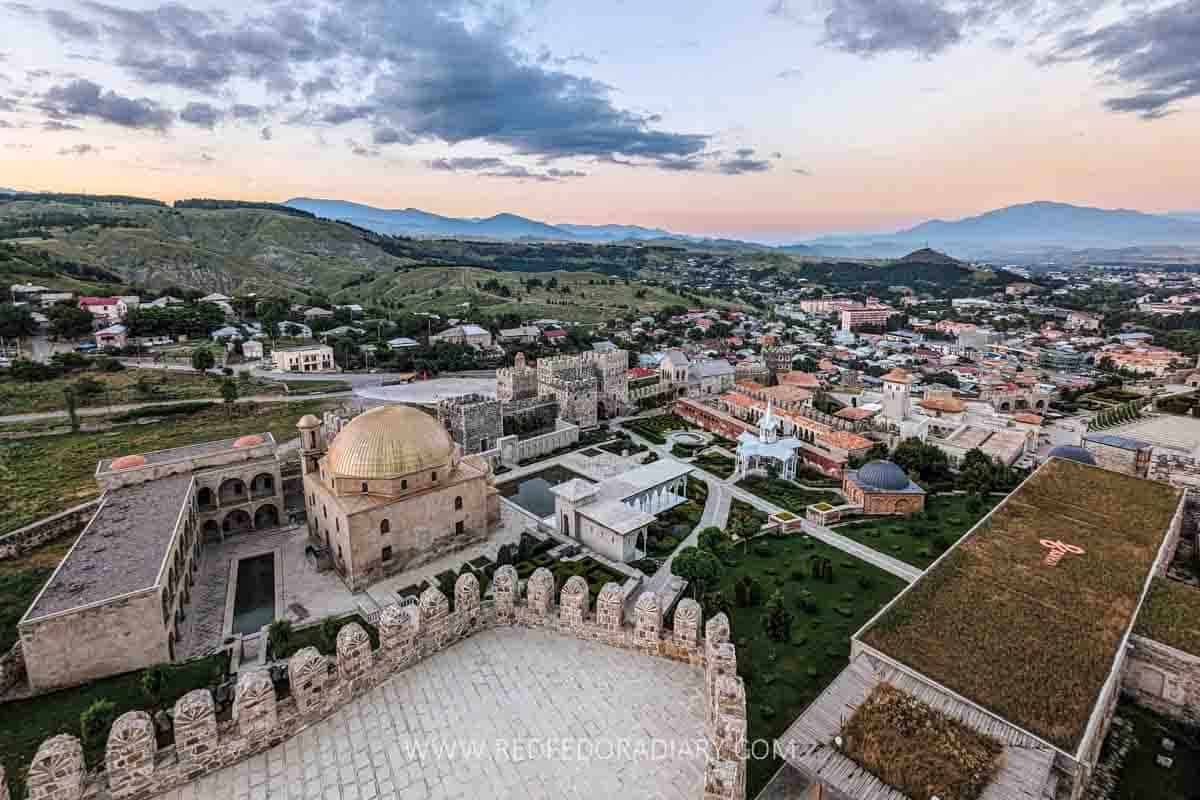
The city’s origins trace back to the 9th century when it was known as Lomsia, which was destroyed in the 11th century and later rebuilt in the early 12th century. Remarkably, the town survived the Mongol invasion, elevating its significance compared to other ruined cities.
The Akhaltsikhe Castle is a magnificent testament to the diverse history and culture of the area and the whole of Georgia and proudly showcases architectural styles from various periods.
Constructed in the 9th century by Guram Mampal, the fortress served as the residence of the House of Jakeli, the ruling noble family of the area.
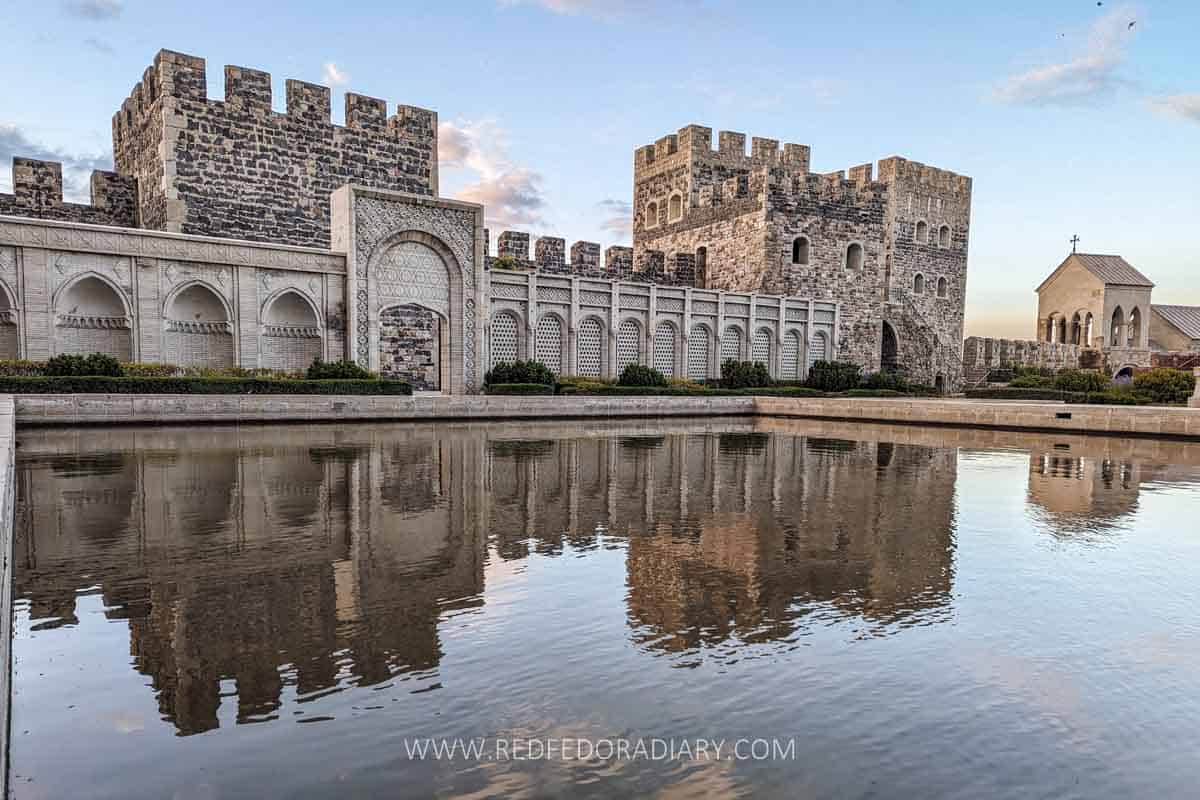
In the mid-16th century, the Turks conquered Samtskhe-Saatabago and created the pashalik (jurisdiction of a pasha) of Akhaltsikhe, which also served as the Pasha’s seat.
From 1628, Akhaltsikhe was ruled by the Muslim Jakelis (converted from Christianity), and Islam spread among different social strata of the Akhaltsikhe pashalik. Churches and monasteries were closed and replaced by mosques.
In the 19th century, during the Russo-Turkish War, Russians took Akhaltsikhe in 1828, and Samtskhe-Javakheti became part of Tbilisi gubernia. After the war, a large part of Meskheti became part of the Russian Empire. The Treaty of Kars of 1921 granted some of the provinces of Meskheti, apart from Samtskhe-Javakheti and Adjara, back to Turkey.
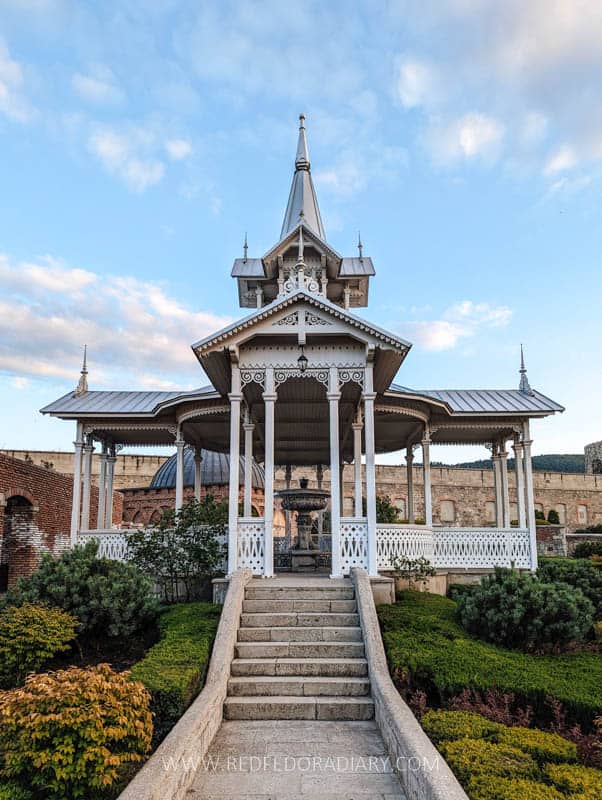
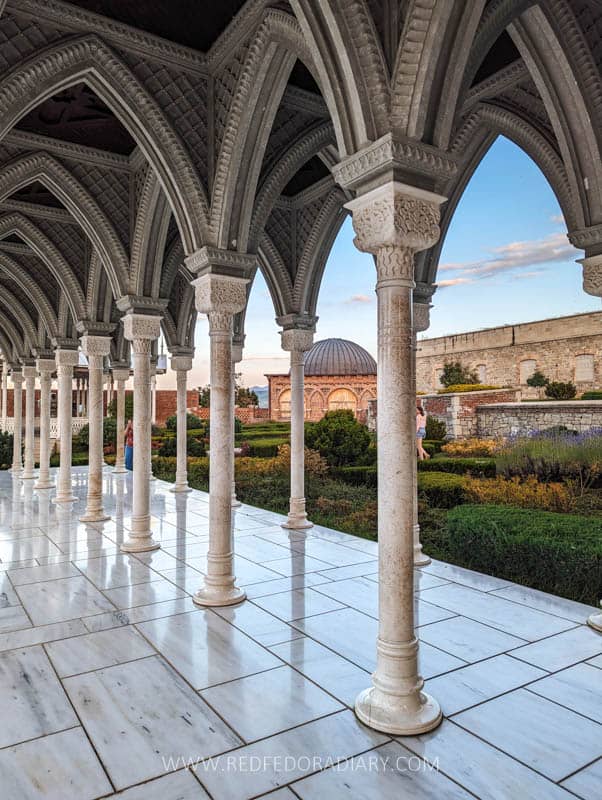
A harmonious coexistence of different nationalities and religions over centuries in Akhaltsikhe is evident in the Madrasa, Synagogue, 9th-century Orthodox Church, Catholic Church, Citadel, 17th-century Mosque built by Ahmed Pasha, and an arena, all either within the castle walls or just a few steps away.
Fully reconstructed in 2011-2012, the castle now boasts modern parks, cafes, hotels, and tourist attractions.
- Opening hours: every day from 9 am till 8 pm.
- Entrance fee: residents and citizens of Georgia – 7 GEL for adults, 3 GEL for students, and 2 GEL for pupils. Foreign citizens – 18 GEL for adults, 15 GEL for students, and 12 GEL for pupils.
→ How to get there: Daily marshrutkas depart from Didube Bus Station from Tbilisi to Akhaltsikhe every 40 minutes or when full, from 7:40 am until 7 pm. It takes around 4 hours to reach the destination. Tickets are 15 GEL per person, one way. You can rent a car or order a GoTrip transfer from Tbilisi to Akhaltsikhe directly.
Don’t miss Samtskhe-Javakheti History Museum
Situated within the Akhaltsikhe Castle, the Samtskhe-Javakheti History Museum tells the area’s long history in depth with various historical and cultural artifacts. It is governed by the Georgian National Museum, which also administers several pivotal museums in Tbilisi alongside numerous regional institutions.
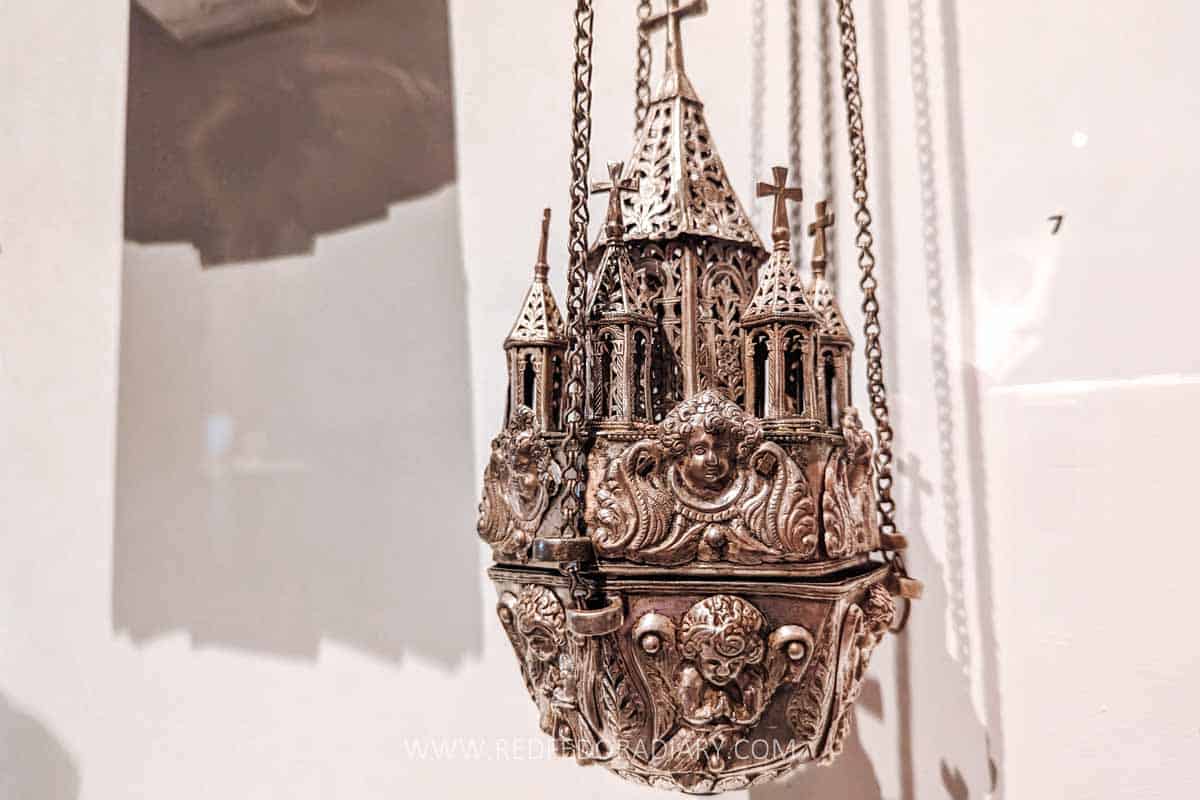
Even though the museum is within a ticketed area, it costs an additional fee to enter, which is sometimes too much for travelers. After two visits to the museum over the years, I strongly advise you not to miss it. And if your budget allows, order a guided visit to understand the complex history of the region better. However, don’t worry if you can’t afford the guide – there are signs and information posters in Georgian and English.
The museum’s exhibition starts from antiquity and chronologically showcases various periods. Some artifacts, such as obsidian arrowheads and other items using obsidian stone, are unique that you can’t find elsewhere in the country.

Among the museum’s highlights are fossils dating to pre-historic times, clay vessels with pictograms from the 30th-29th Century BC, impeccable Meskhetian metalwork, ancient coins and books, delicate gold artifacts, carvings on mother-of-pearls, Hettite cremation showcase, and gemstones from burial grounds, to name just a few.
The museum also shows significant artifacts that Ottoman rule over the region brought to Georgia, including Hookah, colorful pottery, and ceramic tile production.
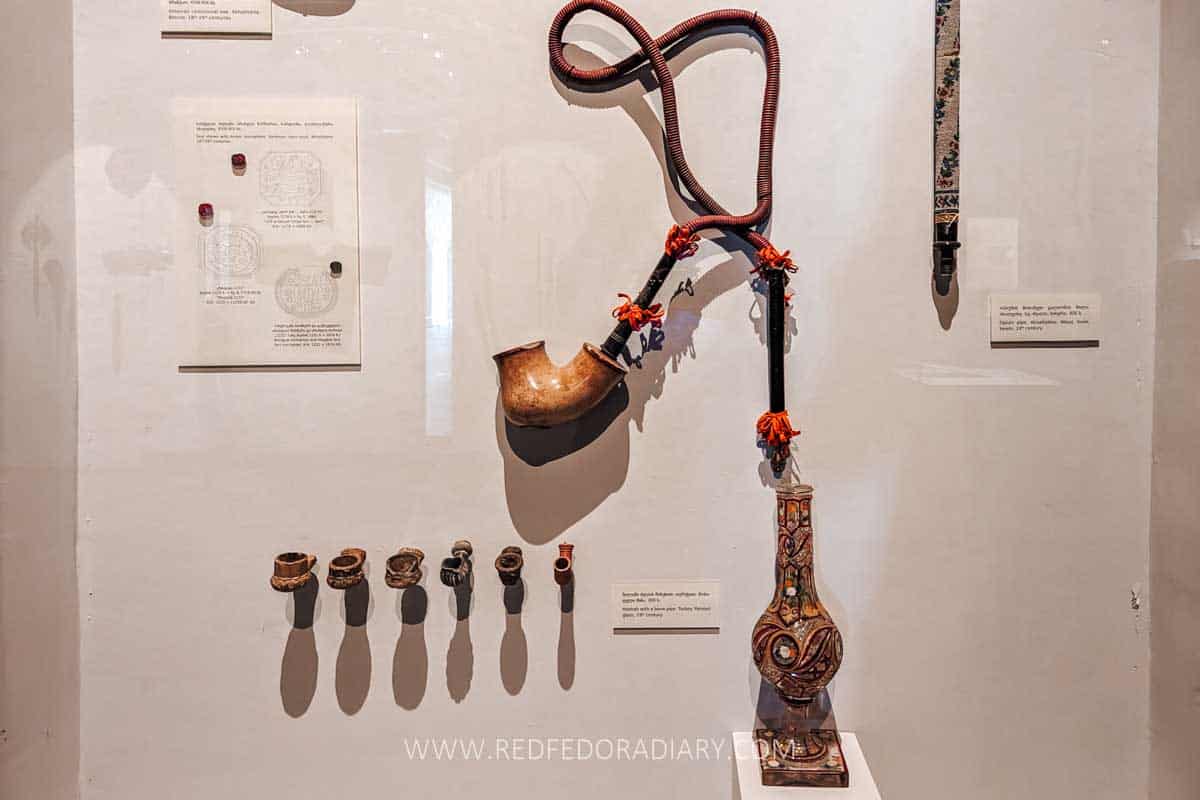
A compelling collection of bronze figures, labeled as ‘fortunate discoveries,’ graces the space, having been unearthed from farmers’ fields.
Two unmissable highlights include a reproduction of the rare Queen Tamar fresco from Vardzia and intricately adorned hammam shoes inlaid with mother-of-pearl that marks Akhaltsikhe’s Ottoman era. As a side note, Tbilisi History Museum also has similar ones.
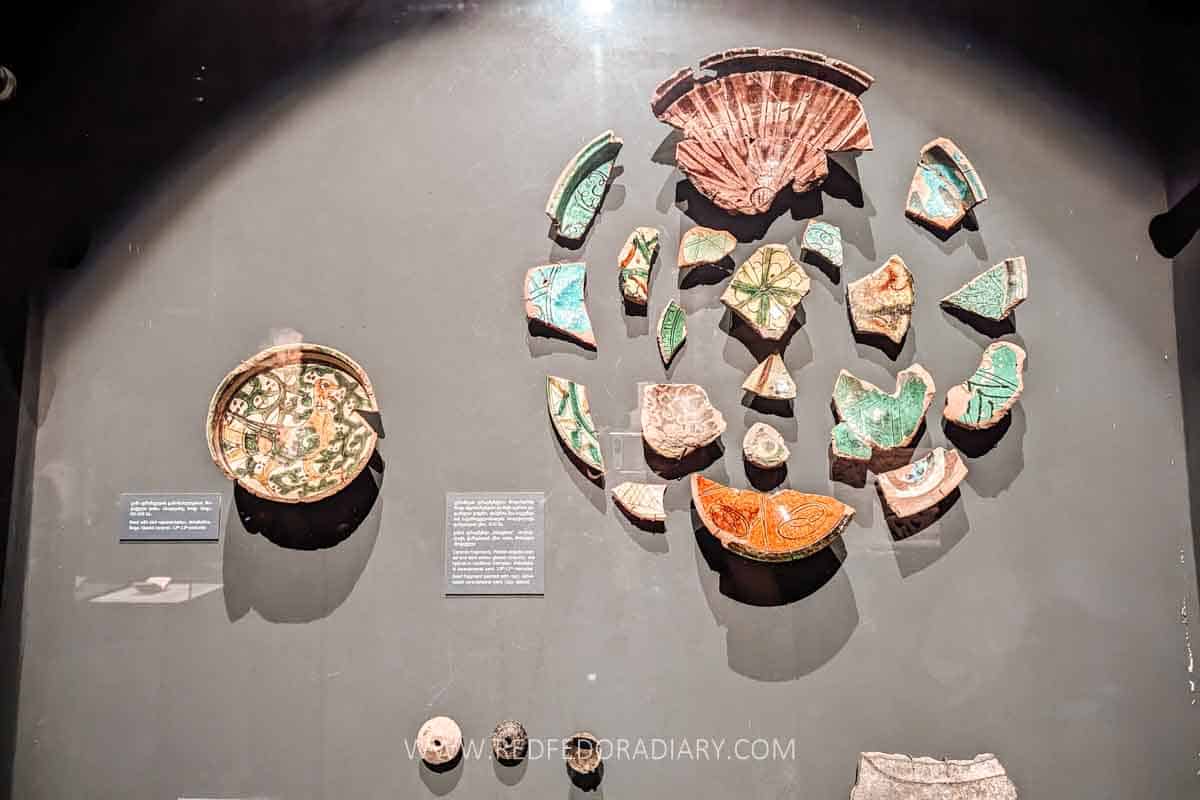
- Opening hours: Tue-Sun from 10 am till 6 pm. Last visit 30 min before closure. Closed on Mondays and public holidays
- Entrance fee: residents and citizens of Georgia – 5 GEL for adults, 2 GEL for students and pupils; Foreign citizens – 15 GEL for adults, 10 GEL for students and pupils.
See the oldest Torah at Akhaltsikhe Synagogue
The enduring Georgian-speaking Jewish community is among the most ancient Jews in the world, with a history spanning approximately 2,600 years; the presence of Georgian Jews can be traced back to their roots in the Colchis Kingdom.
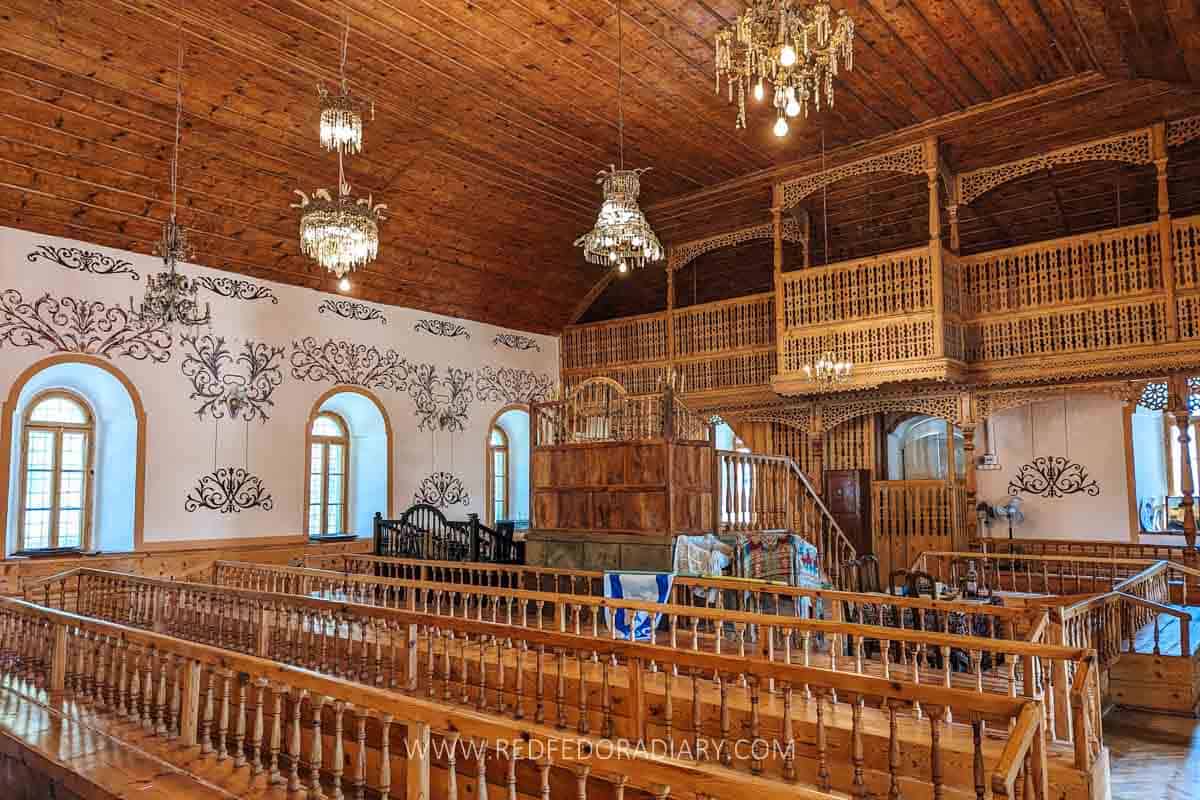
The genesis of the Georgian Jewish populace, referred to as Gurjim or kartveli ebraelebi, remains a topic of ongoing debate. The prevailing theory suggests that the earliest Jewish settlers arrived in the southern regions of Georgia during the Babylonian captivity in the 6th century BCE.
Notably, they stand apart from the Ashkenazi Jews in Georgia, who arrived following the Russian annexation of Georgia and have different practices and languages.
In the not-so-distant past, their community numbered nearly 60,000 individuals living in Georgia. However, many have since emigrated, finding new homes in Israel, the United States, the Russian Federation, and Belgium (particularly in Antwerp).
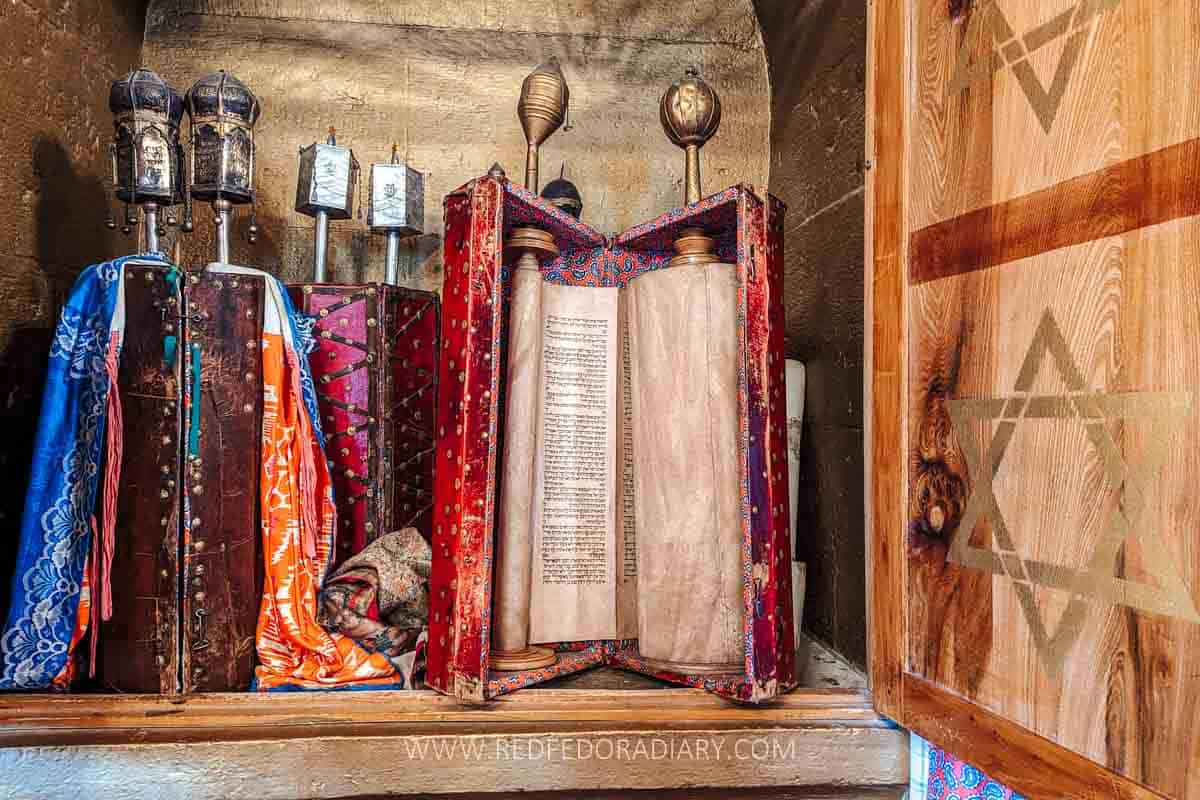
According to the 2002 First General National Census of Georgia, the country’s Jewish population encompassed 3,541 believers. By 2014, merely around 1,500 Georgian Jews continued to reside within Georgia.
Due to having the oldest Jewish communities, you can find synagogues pretty much in every considerable town of Georgia, including Tbilisi, Kutaisi, Batumi, Gori, Oni, Poti, and Sujuna. While some are abandoned, some are still cared for, and most are not active due to insufficient Jews living in the city.
Among the prominent synagogues in Georgia, the Akhaltsikhe Synagogue occupies a position of importance.
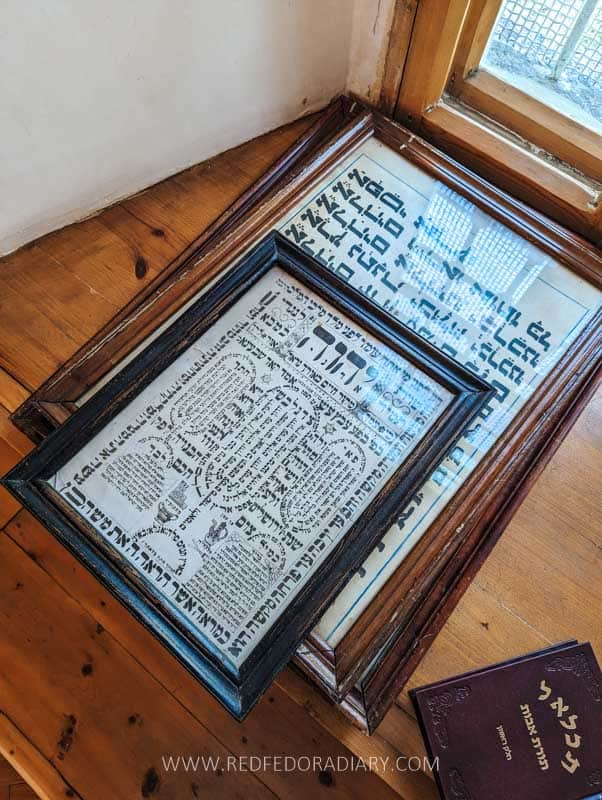
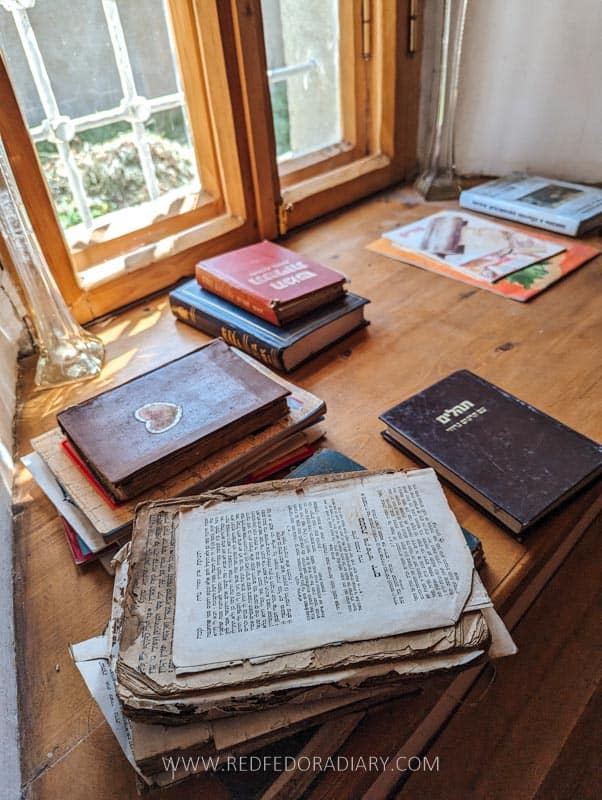
The synagogue, constructed in 1863, boasts a remarkable interior adorned with intricate handcrafted woodwork somewhat similar to what I found in the Poti and Gori synagogues. Within its walls resides the nation’s oldest Torah, an artifact crafted on deer skin five centuries ago.
In the past, Akhaltsikhe was home to a vibrant Jewish populace of 800 families and had two synagogues in the Rabat district. One is completely abandoned, and the second is cared for by the only remaining Jew in town – Bene or Benjamin.
Bene’s father and great-grandfather passed down the responsibility of preserving the synagogue. Whenever a sufficient number of visitors gather to form a Minyan, Bene also leads prayers.
→ How to visit: I suggest calling him in advance if you plan on visiting. Most of the caretakers of these synagogues in Georgia are not always there, but they always have phone numbers posted on the venue’s doors. Here’s Bene’s number: +995 599 937 280. He speaks English and can tell you about his community and role.
Don’t forget to try snails, an unusual delicacy in Georgia
Lokokina, or snails in English, is an unusual delicacy native to only the Meskheti region of Georgia. Meskhetian Lokokina is mainly spread across the rocky terrain of Akhaltsikhe, Adigeni, and Aspindza villages.
According to one belief, the popularity of eating snails in Meskheti is associated with French Catholic missionaries who came to Georgia in 1230.

However, I’ve read in one article that a historian, Giorgi Beridze, also believes that snails were an integral part of the Meskhetian communities even before the missionaries based on folk literature. During the invasions, citizens would escape to rocky mountain areas of the region where they could only eat dried mulberry, tklapi (fruit leather), and snails.
Meskhs make Lokokina by boiling them with their shells and then flavoring them with simply parsley and garlic. It is served in shells accompanied by toothpicks to help you to fish them out.
The best time to eat snails in Samtskhe-Javakheti is from October until March, but we had some during our visit in July. While it is a delicacy for many Georgians, it is not in Meskheti. Families eat it regularly during the season and even have them a few times a week.
Where to try Lokokina: In Akhlatsikhe, you can find Lokokina at Old Bar Akhaltsikhe, Natenadze Wine Restaurant, and Rabati Launge Bar Terrassa
Drink mineral water Borjomi from the source and learn about Romanov’s connection
Lodged in a narrow gorge between the Meskheti and Trialeti Ranges, alongside the Mtkvari River, Borjomi is a charming small town highly reliant on tourism and renowned for its famous mineral water.

Its roots trace back to the Middle Ages, though it remained modest until the 19th and 20th centuries when Russian and Soviet sanatoriums were established here. It became even more important when Russian viceroy Mikhail Vorontsov and the Imperial family of Romanovs built summer residences here.
Renowned for its mineral-rich waters, Borjomi’s healing springs have attracted visitors for centuries. The town’s lush central park is adorned with tree-lined pathways and quaint bridges that lead to various mineral water fountains.

Cultural enthusiasts will find themselves captivated by Borjomi’s historical heritage. The town’s architecture reflects a fusion of influences, showcasing a blend of traditional Georgian and European elements. The Romanov Summer Palace, a former royal residence now part of a hotel and non-accessible for outsiders, is a testament to the region’s regal past.
Be sure to visit the small history museum of Borjomi to learn about Romanovs and see their memorabilia humbly displayed in the museum, as well as see the old bottles of Borjomi water and the diplomas it ever got.

For nature enthusiasts, Borjomi National Park boasts diverse ecosystems ranging from dense forests to alpine meadows. Hiking trails of varying difficulties offer opportunities to explore the park’s diverse flora and fauna, with the chance to spot rare species such as the Caucasian black grouse and brown bear.
→ Read my detailed Borjomi city travel guide, including how to get there, the best places to visit, things to do, and where to eat.
Ski in Samtkhe-Javakheti’s high mountains
The region’s high altitude contributes to cold and snowy winters, making it ideal for winter sports enthusiasts. Bakuriani, located in the northern part of Samtskhe–Javakheti, boasts a popular ski resort not far from the renowned attraction of Borjomi.

Bakuriani stands out as a premier ski destination in Georgia tailored for beginners and professionals, and it’s conveniently situated just a three-hour drive from Tbilisi and 40 minutes from Borjomi.
The resort, perched at an elevation of 1,700 meters above sea level, is encircled by verdant coniferous forests, making it a year-round destination for locals, especially families.
The ski season starts in Bakuriani in December/January and lasts till March/April, depending on the snowfall. The resort boasts diverse ski slopes catering to different skill levels. For those taking their first steps on the snow, there are gentle 25-meter runs specifically designed for beginners and youngsters. Meanwhile, the more seasoned skiers can relish the challenges of Tatra, Kokhta, and Didveli slopes.

Given its immense popularity among residents and international visitors, Bakuriani boasts a broad spectrum of accommodation choices. From mid-range hotels to cozy guesthouses and practical apartments, the lodging options cater to travelers with varying budgets. Rooms Kokhta, housed in a former Soviet-era resort, is one of the branches of the local Rooms Hotel chain, offering comfort and modern amenities with a bit of luxury to its visitors.
For those arriving without their ski gear, Bakuriani offers easy equipment rentals, an especially appealing option for beginners. If you’re new to skiing, you can hire a seasoned professional to guide you through the learning process. Most hotels also provide their own rental gear and instructors or are happy to assist guests in finding these resources.
Accessing Bakuriani is hassle-free with options like public transportation, minivans (marshrutkas), or shared taxi vans at Tbilisi’s Didube Bus Station. Borjomi-Bakuriani marshrutka departs daily several times a day. The schedules and prices are available at the ticket office in Borjomi.
→ How to get there: You can take a daily marshrutka from Tbilisi to Bakuriani from Didube Bus Station or from Borjomi. For a slightly comfortable journey, you can also opt-in for shared taxi vans from Tbilisi, but most of the time, they need to fill the vehicle with other passengers. Alternatively, you can rent a car or order a GoTrip transfer from Tbilisi to Bakuriani directly and stop at Borjomi.
Go rafting near the Mtkvari River near Borjomi
If you’re into thrilling adventures, get ready for an exhilarating ride through the lively currents of the Mtkvari River near Borjomi with white water rafting, where you’ll skillfully maneuver an inflatable boat down the mountain river, taking on rapid flows, swirling whirlpools, and tricky obstacles – it’s an exciting and daring experience.

A seasoned instructor will be right there in the boat with you, offering expert guidance and clear instructions. And if you’re wondering about safety, especially if there’s a big group of rafters, there’s an extra instructor trained in safety procedures following along in a kayak.
Plan your adventure during the summer when the river levels are just suitable for the best white water rafting conditions. I recommend getting in touch with the folks over at Extreme Rafting. They’re a top-notch company that can set you up with a comprehensive tour.
Speaking from experience – I’ve gone rafting twice – I can vouch for Tengo’s rafting camp in Chitakhevi. Tengo and his crew are certified rafting pros with loads of training, and they’re all about keeping you safe.
They provide top-of-the-line gear, including life jackets, helmets, and waterproof boots if needed. Before you hit the rapids, Tengo or one of his team members will ensure everyone knows the ins and outs of staying safe in different situations.
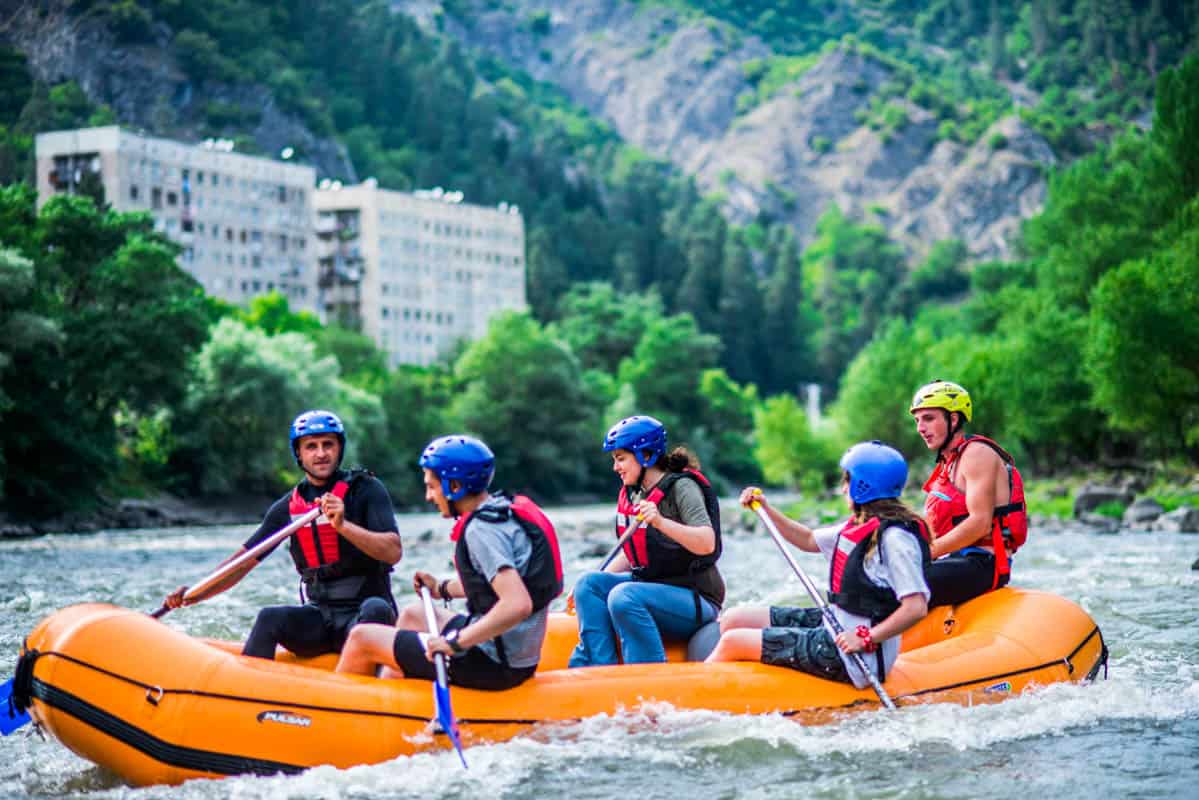
As for the actual rafting, Extreme Rafting has different routes with varying levels of challenge. The Chitakhevi to Likani route, spanning about 8 km, is one of them. It takes around an hour to conquer from start to finish.
And here’s a cool part: if you’re up for it, your guide can stop at various points along the way for some river swimming or even jumping in from a tree branch. Tengo, in particular, knows how to keep things interesting by throwing in some extra challenges as you go.
Once you’ve conquered the rapids and reached Likani, a van will be waiting to take you back to the campsite.
When planning rafting, ensure you have an extra set of clothes specifically for the activity. You’ll likely get soaked from head to toe, so pack some shorts or leggings, a comfy T-shirt, and either sandals or sneakers. It’s all about staying comfortable while you take on this fantastic adventure!
→ How to do rafting: You can see all the spots Tengo does rafting tours on their website or contact them on Facebook and schedule the trip.
Meander through the biggest cave town in Georgia
Samtskhe–Javakheti boasts many captivating tourist attractions, and if you’ve researched about places in Georgia, you must have come across the region’s crowning jewel – the renowned cave monastery and town of Vardzia, founded by King Tamar (yes, we call our most famous Queen a King, actually) in the year 1185.
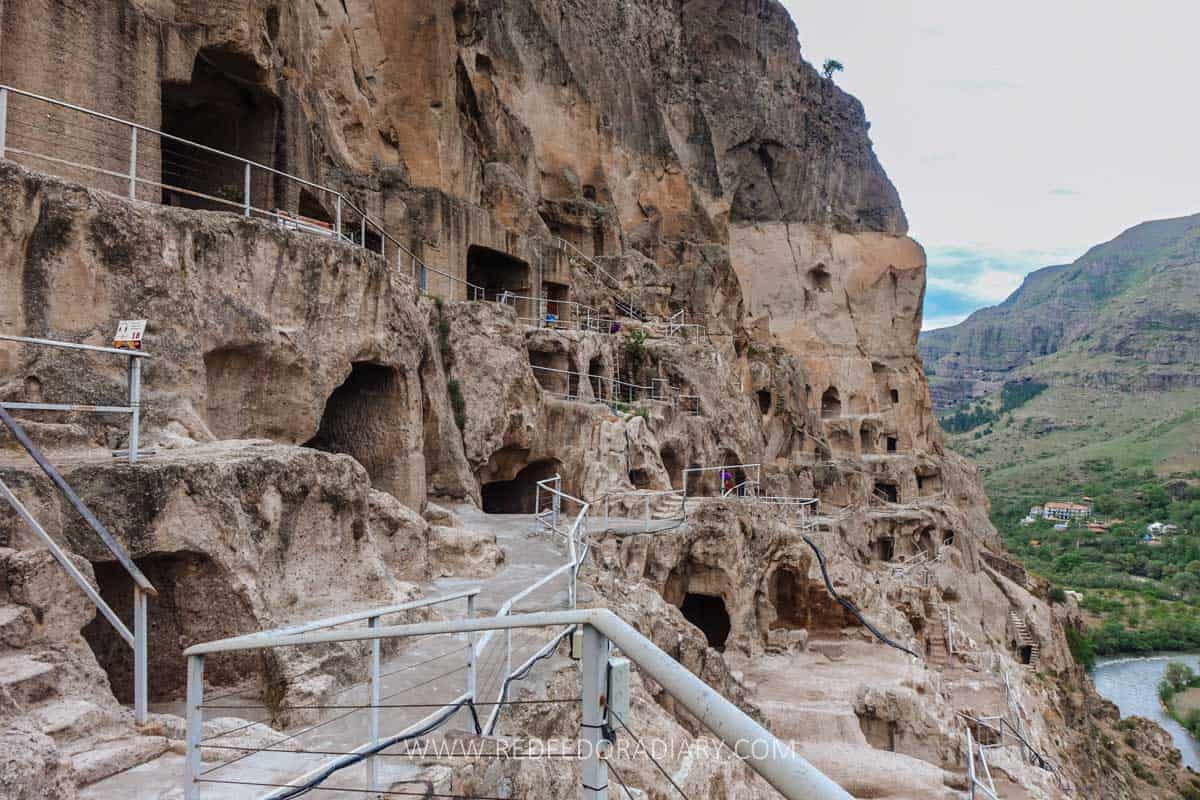
Located in a deep valley carved by the Mtkvari River on the Javakheti Plateau, Vardzia’s history dates back to Georgia’s Middle Ages. Originally a modest monastery constructed by King Giorgi III, Vardzia expanded significantly during King Tamar’s reign, with the Church of the Dormition intricately carved into the caves of the sanctuary. During her period, Vardzia became Georgia’s prominent religious and political center. It also served as a hiding place for various invasions.
Devastated by an earthquake in 1283, nobleman Beka Jakel-Tsikhisjvareli partially restored the monastery. It managed to escape damage during Mongol attacks of the 13th century but fell to Persian invaders in 1551 and was eventually abandoned after the Ottoman rule in 1578.
Vardzia’s complex holds great historical significance, featuring murals depicting the Georgian royal family, particularly King Tamar. At its peak, Vardzia towered over ten stories tall and boasted more than 600 rooms, including a dining hall, bakery, and forge.
Ingenious engineering features, like intricate irrigation tunnels, concealed entrances, and a unique terraced farming system, further strengthened its defense.
→ Read my detailed post on how to visit Vardzia, including how to get there, the best time, what to wear, and general tips.
Marvel at best kept medieval fortress
Located at the confluence of the Paravani and Mtkvari Rivers between Akhaltsikhe and Vardzia, Khertvisi Fortress stands as one of Georgia’s best-preserved medieval castles. It is a striking testament to ancient times for history enthusiasts, as its roots trace back to the 10th century.

Strategically positioned on a rocky hilltop at the river confluence, this fortress controlled the access to/from Akhaltsikhe both from the south and east.
Many of the castle’s towers were erected during the 14th century but suffered collapse during the Ottoman invasion. Subsequently, the castle and its surrounding town were abandoned.
Today, the fortress has been restored, enabling you to tour its grounds and find traces of the town’s ruins.
- Opening hours: every day from 10 am to 6 pm.
- Entrance fee: 5 GEL for adults.
→ How to visit: The best way to see the fortress is when driving from Akhaltsikhe to Vardzia. Unfortunately, there is no public transportation from Akhaltsikhe. Alternatively, if you order a GoTrip transfer from Tbilisi to Vardzia, you can add the fort as one of the stops.
Find solace in the tranquil lakes and spot some birds
Amidst a landscape adorned with striking contrasts, Javakheti is a real gem, holding secrets from the Iron and Bronze ages that tell the epic story of Georgia over countless years.
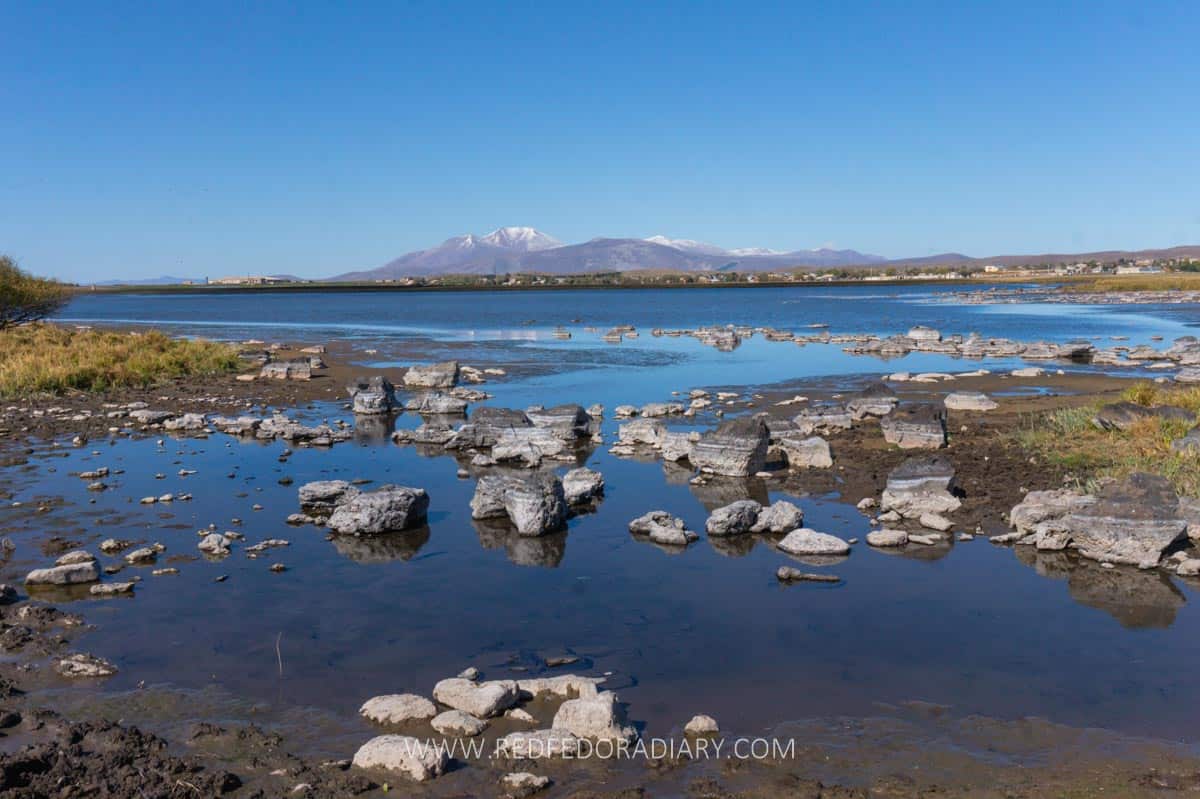
Lodged snugly in the embrace of volcanic plateaus, Javakheti boasts deep ravines, lofty mountain steppes, winding canyons, cyclopean fortresses, and vibrant alpine greenery.
It is home to dozens of gorgeous lakes that serve as a haven for over 260 species of resident and migratory birds, where thousands find their nesting grounds annually.
The lakes of Javakheti, including Paravani, Saghamo, Bughdashni, Khanchali, Madatapa, and Kartsakhi, offer a splendid sanctuary for migratory birds, attracting birdwatching enthusiasts from late spring to autumn.
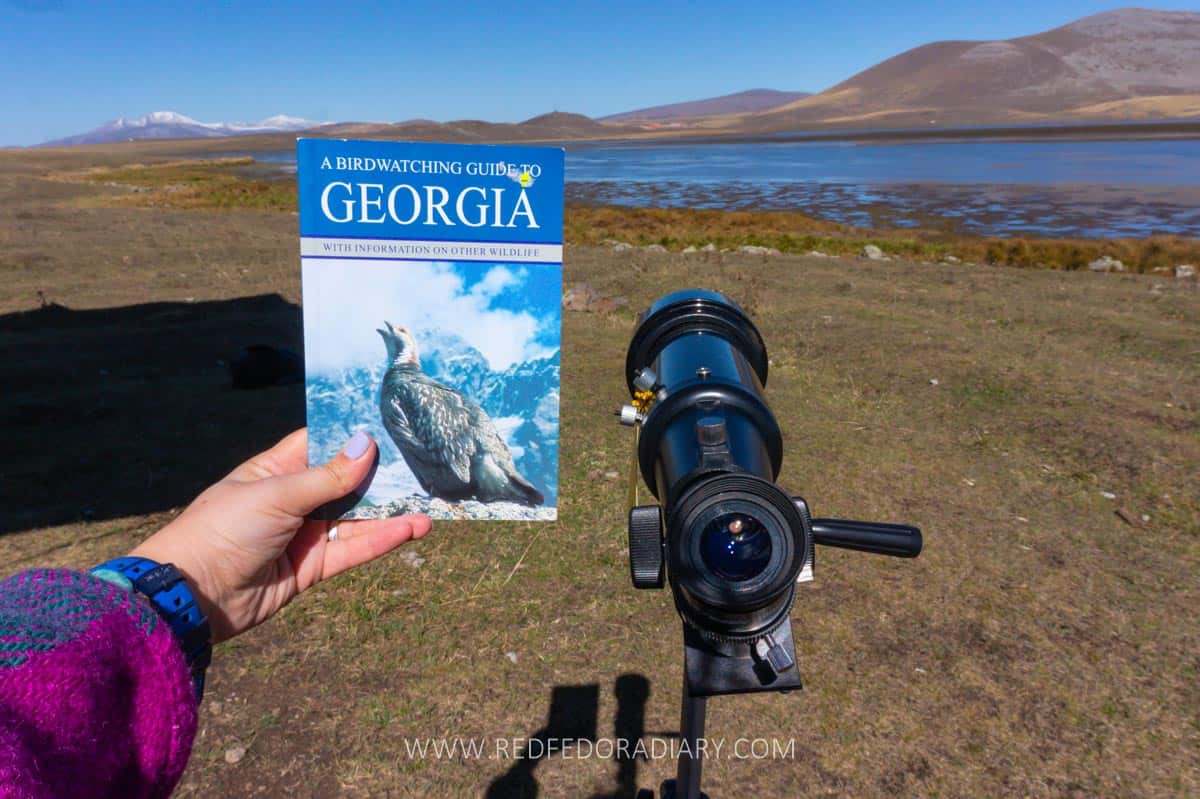
You can observe rare and endangered species, like the Dalmatian Pelican, otters, and Marbled Polecat, grace these shores, and the White Stork, Common Crane, and Curly and Pink pelicans primarily on Madatapa and Kartsakhi lakes.
Tabatskhuri Lake also became home to the Velvet Scoter (velvet duck), a large sea duck typically nested in Eastern Turkey. A friend of mine, Saxon, spent a few months in Tabatskuri documenting researchers on Velvet Scoter and released a film titled Mr. Velvet Scoter, which you can watch on YouTube. The documentary doesn’t only talk about Velvet Scoter but also gives an in-depth look into the area and locals’ lives.
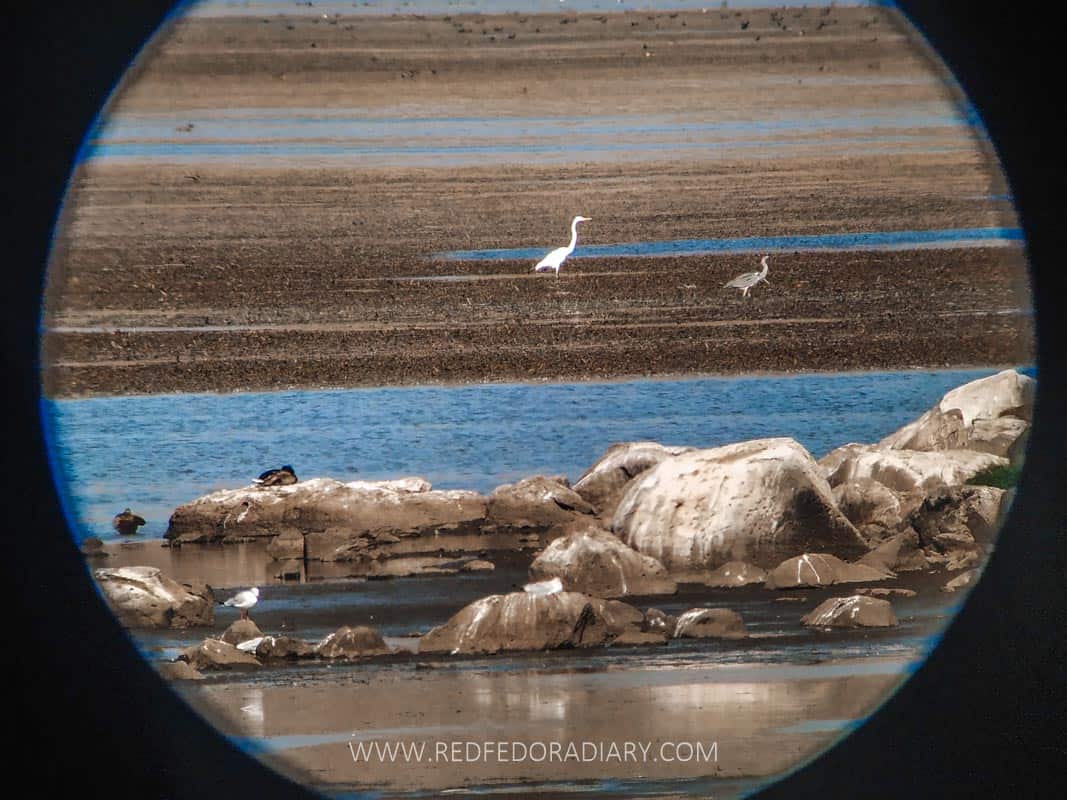
While Javakheti offers a magical experience every season, winter holds a particular charm. Frozen lakes allow unforgettable walks, skating, and fishing. And amid all this peaceful beauty, you’ll find a scene that brings calm vibes and a sense of amazement.
→ How to visit: The best way to explore various Javakheti lakes is to have your own car. Alternatively, you can order a GoTrip transfer with the driver from Tbilisi to Paravani and Madatapa Lakes only. If you want to get some maps, camping gear, or assistance, stop by the Javakheti Protected Areas administration office in Akhalkalaki.
Learn how to make Meskhetian Kachapuri, Kada, and string cheese
Meskhetian cuisine has rare and unfamiliar meals, unlike many other regional dishes in Georgia, but is still heavy on dough, fat, and salt.
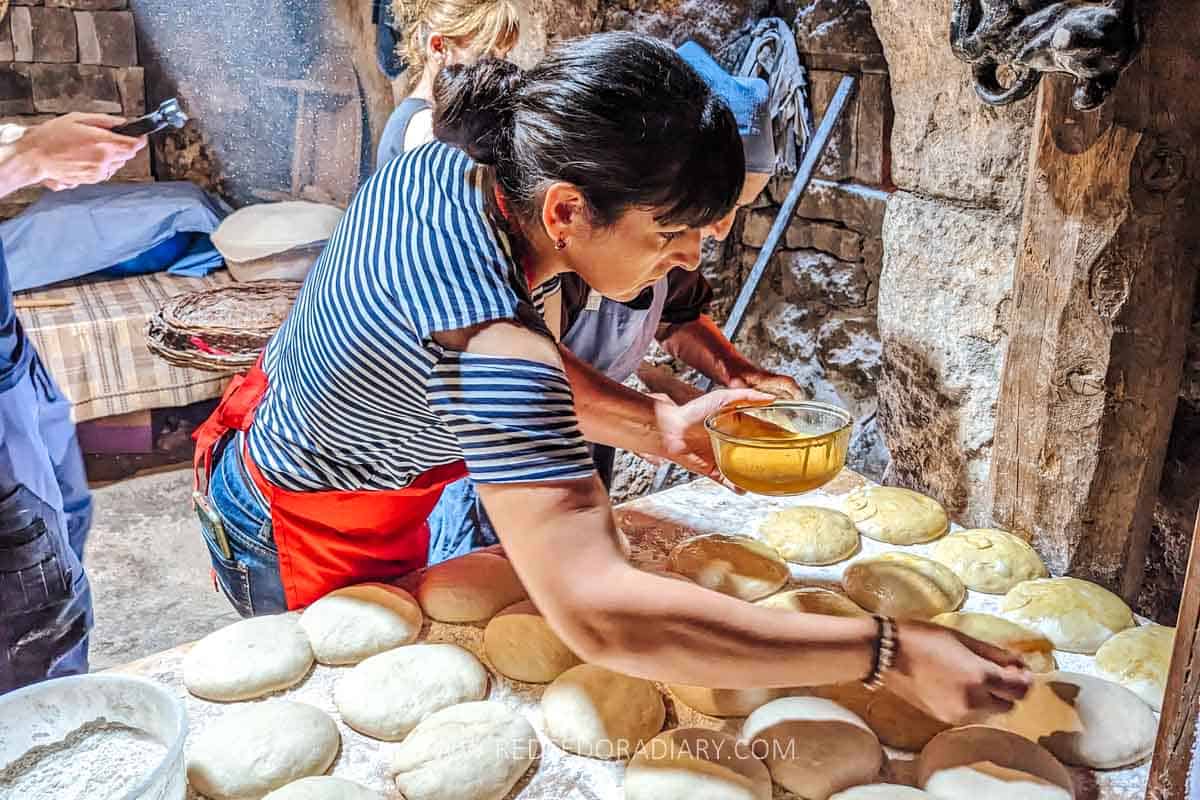
There are two reasons for that. Back in the day, when this region was no stranger to the rumble of war, families needed to have food to survive long sieges. A long and snowy winter also played a crucial part in developing the local meals. That’s why foods like dehydrated, salted, and preserved treats became a commodity – they were easy to carry and store.
Tenili Cheese, enlisted as Intangible Cultural Heritage of Georgia, is made from melting curds in hot water and then stretching and spinning until they become strings. It’s a technique that’s been around for centuries, and only a handful of locals preserve it until today.
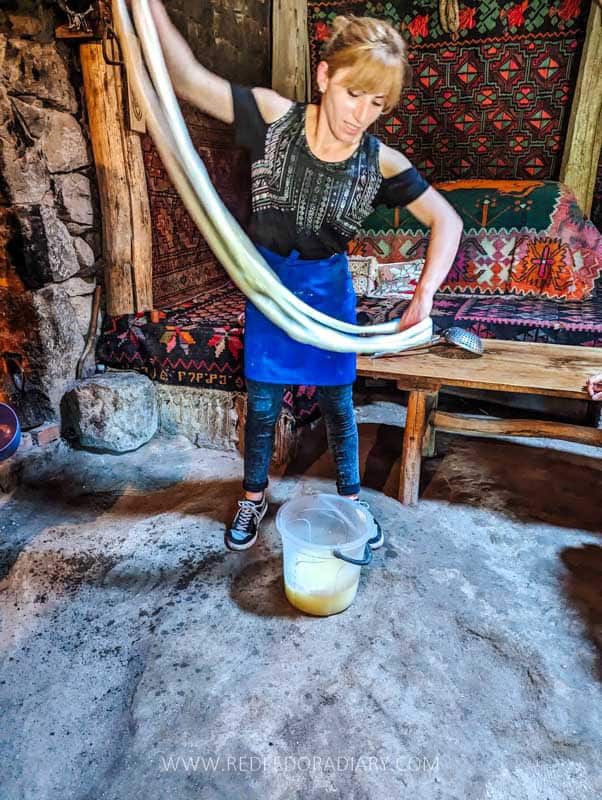
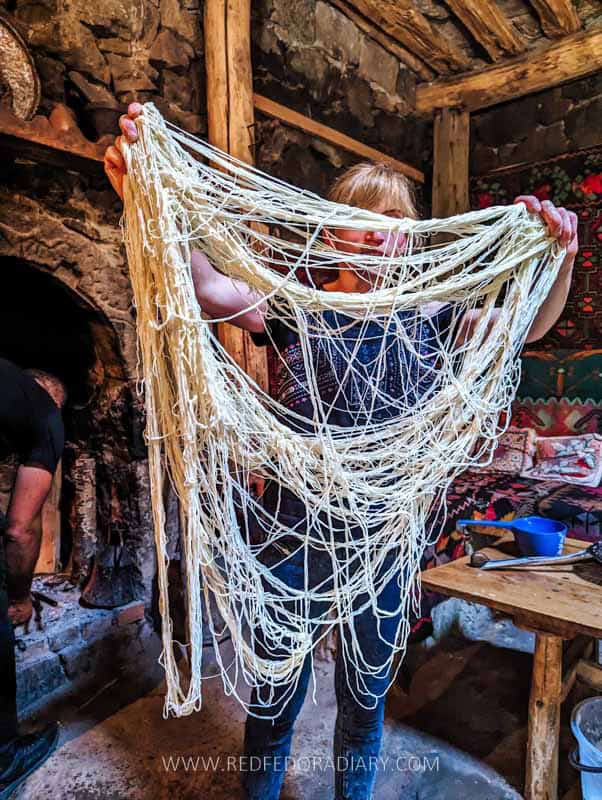
Tenili is one of my favorite Georgian cheeses that I can eat non-stop. I first saw its making process in the village of Andriatsminda at Galina’s place on another press trip.
Aluda Jvaridze’s Meskhetian Oda Mzianeti (the word ‘Oda’ in Georgian refers to a specific architectural style house) was the second time I had the pleasure to see the fascinating process of its making, along with other Meskhetian cuisine delicacies baked in a traditional Meskhetian stone oven.
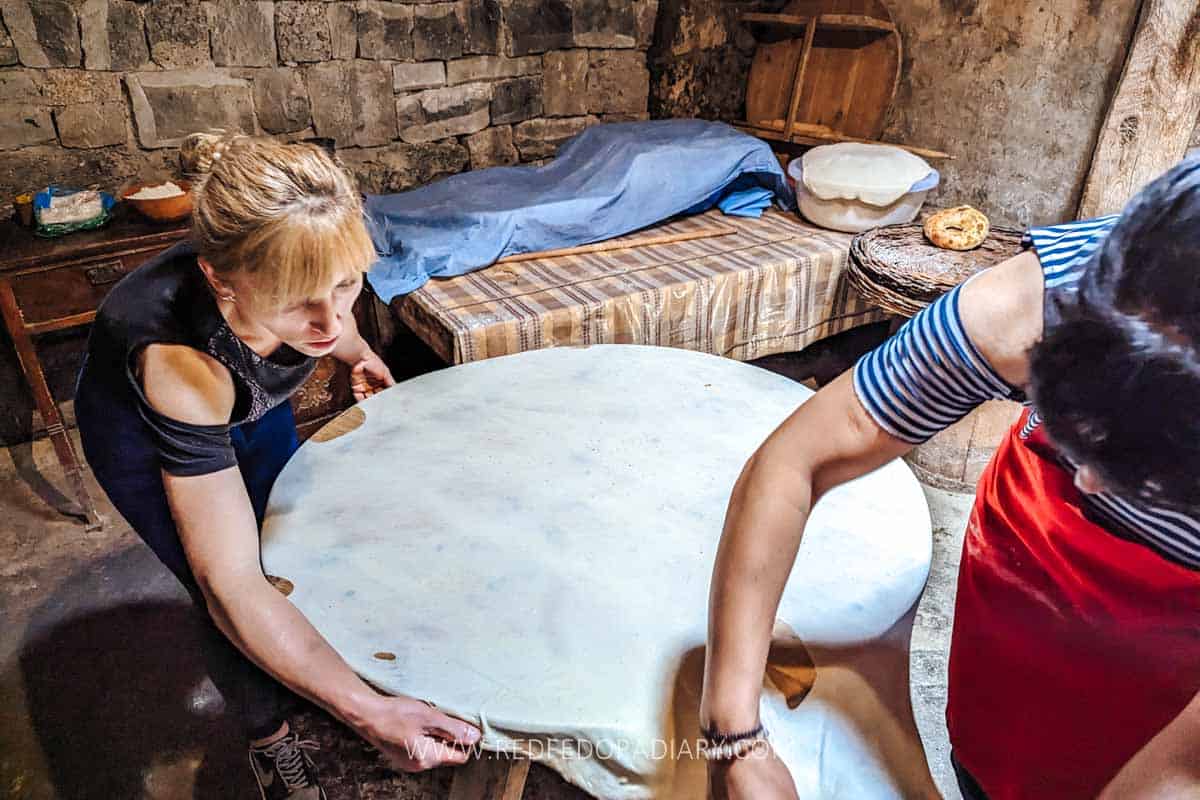
Aluda’s team, including his mother Dariko and helper Natia, invite tourists into their traditional kitchen with an ancestral stone oven to showcase the tricks of assembling local Kada, Khachapuri, and bread. Tenili Cheese making-process is also on the menu, but it comes a bit later at the dining area’s fireplace.
Between the workshops, the team serves local delicious meals you’d want to eat all but won’t have space for them in your belly.
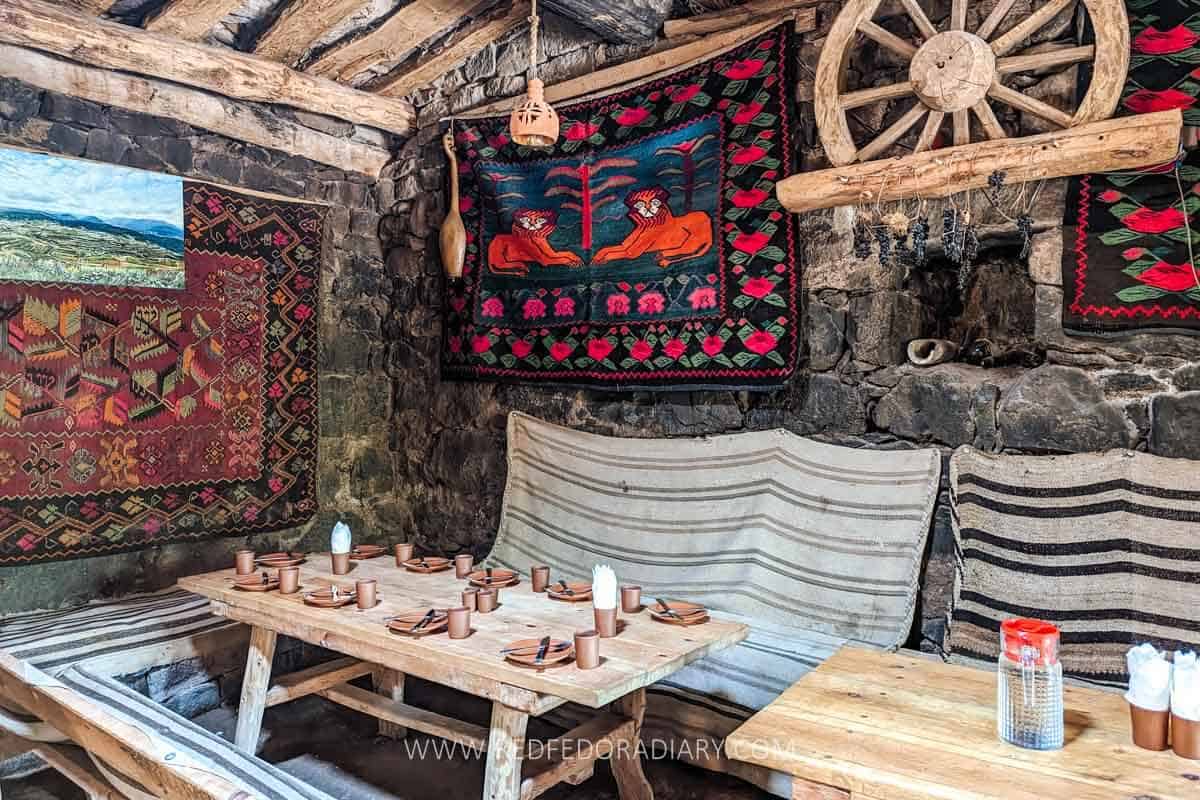
What makes Aluda’s place even more remarkable is that he has two family Odas in his yard; one of them has stood there for almost 300 years, while the new one is a recreation of the old one.
→ How to visit: You need to book an appointment for the masterclasses and lunch/dinner. You can contact them on their Facebook page or ask the Samtskhe-Javakheti DMO to arrange it for you.
Enjoy stargazing at Georgia’s only observatory
Head to the western part of Samtskhe-Javakheti to watch the stars at Abastumani Astrophysical Observatory. This is not your typical tourist spot; it’s a gateway to the mysteries of the universe, offering a chance to learn and witness celestial marvels.
Abastumani Observatory, equipped with a massive telescope, allows you to explore the far reaches of space, unveiling the secrets of distant galaxies, stars, and planets. It’s a chance to get up close and personal with the cosmos and an experience that will leave you in awe.
Back then, the Abastumani Astrophysical Observatory was the USSR’s first (and for quite a while, the only) alpine observatory. It all started in 1932 when Georgian academic Evgeni Kharadze set it up. Mount Kanobili’s weather conditions – clear skies and gentle winds – made it a heavenly spot for peering into the cosmos. Thanks to Georgian and Soviet scientists, the observatory witnessed some remarkable discoveries that shook up the scientific world.
The observatory’s walls have plenty of archival photos and materials on display to see its heyday.
Today, the observatory offers day and night tours that last around 60-90 minutes and cost 10 and 20 GEL per adult, respectively.
→ How to visit: First, note that the sky needs to be clear to look at the stars and various planets. For details on the tours and contact information, refer to their website. The tour pages on the website don’t have an English version, so you should turn on the Google Translate extension if you use the Chrome browser.
Venture into authentic Meskhetian homes and ancient fortress
Positioned midway between Vardzia and Akhaltsikhe, village Saro perches atop a ridge with a unique appeal – surrounded by sweeping valleys and massive volcanic stone slabs.
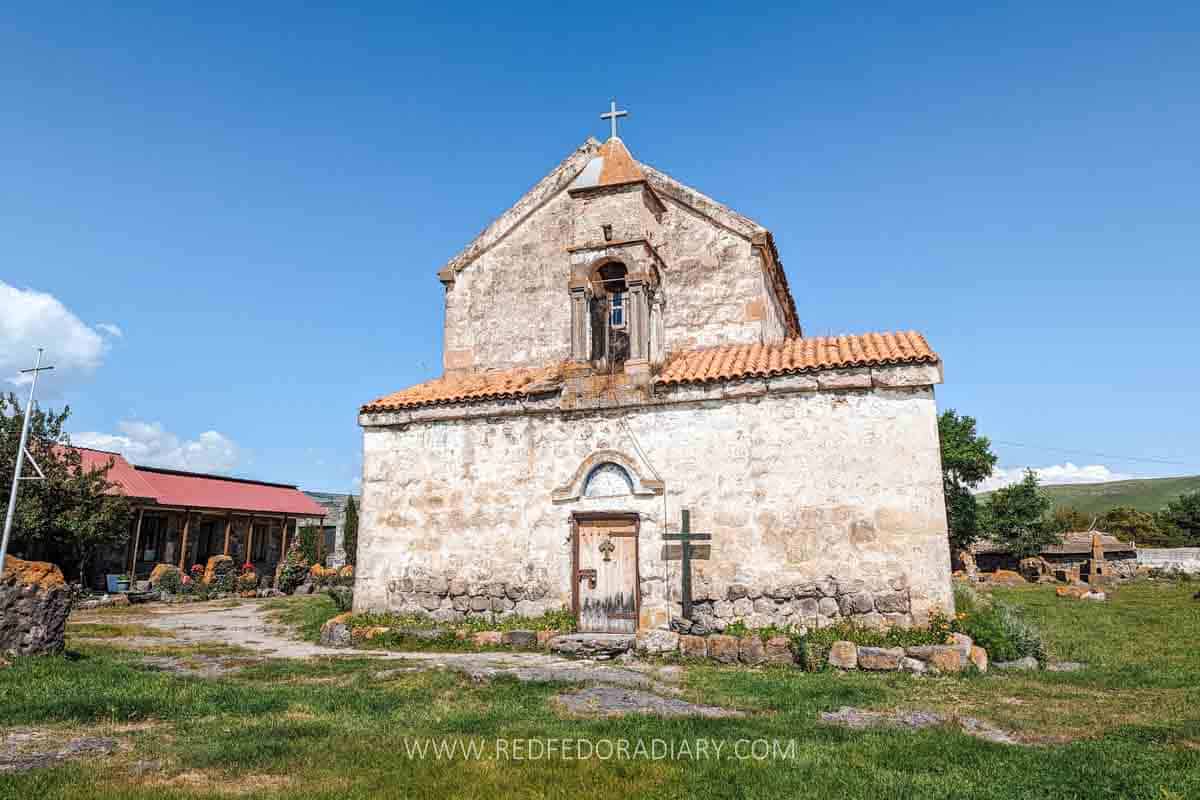
One of the main attractions of Saro is the Archangel Church of Saro, a little chapel that dates back to the 7th century, where you’ll find ancient icons inside.
Sister Teona and other nuns are very friendly and always happy to give curious visitors a tour. They also have a small gift shop of all the handmade items they make on the site – a perfect souvenir for you and an act of your support towards the nunnery.
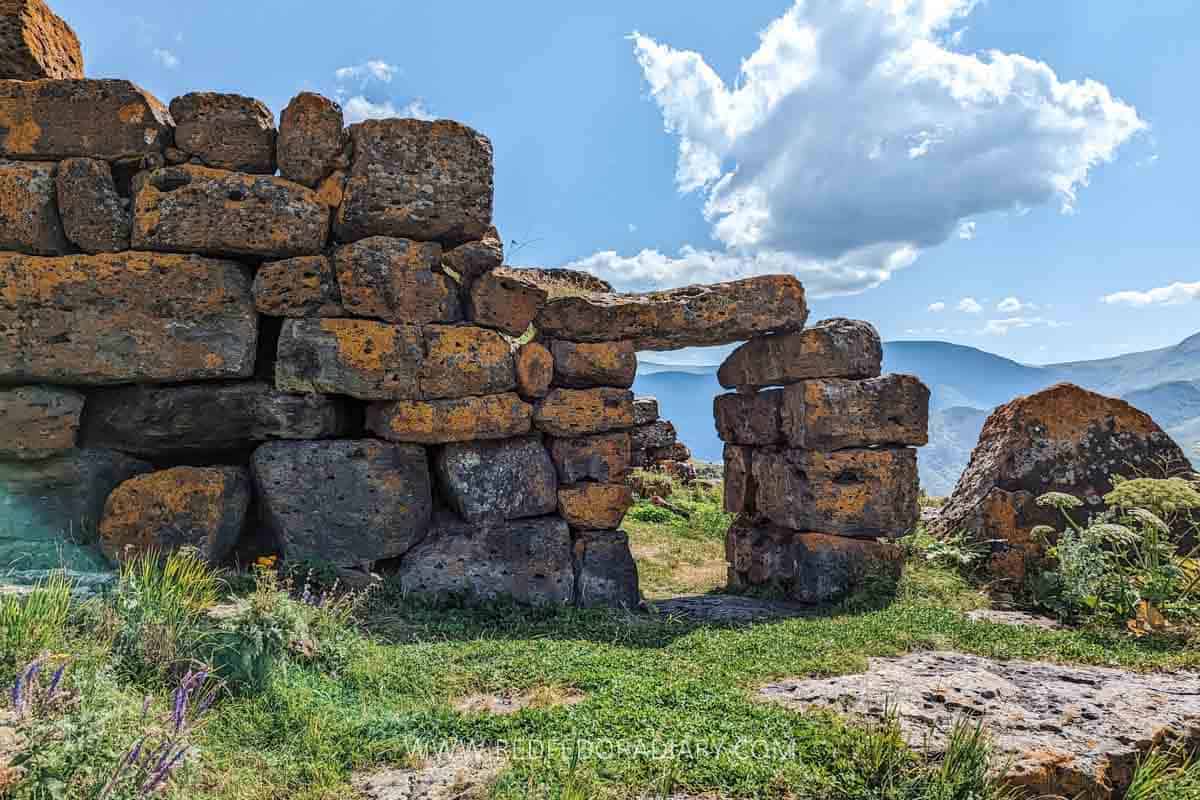
The massive volcanic rocks scattered all over the church are remnants of Cyclopean fortresses, part of the impressive megalithic structures that dot the Samtskhe-Javakheti region (more on one of them below).
Behind the church, ancient gravestones lay on the ground with carvings showcasing the identity of the person buried. I have found similar ones in the church’s yard near Tsalka (Dashbashi) Canyon.
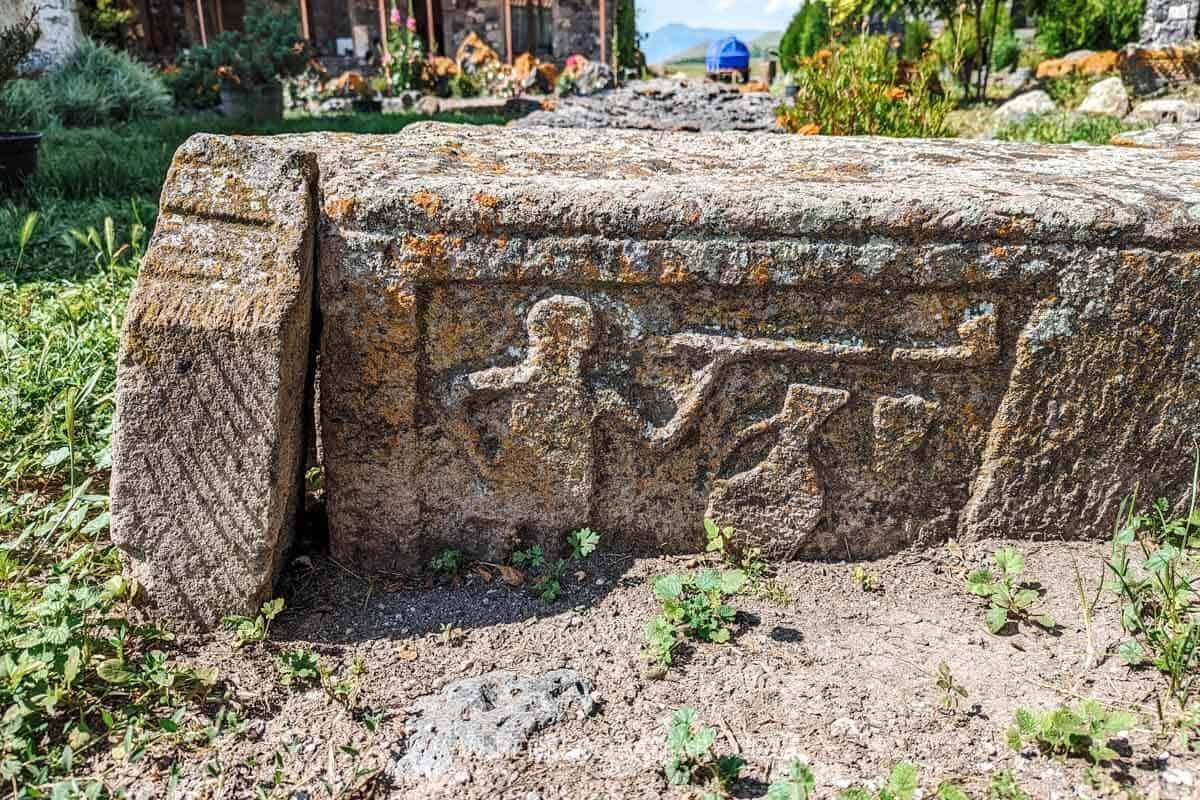
Wander beyond the church premises to find many abandoned Mesketian Darbazuli houses. These houses are built around a central hall with linked pieces of timber and no windows, just a tiny opening on top that lets the light stream in. Since swallows love making nests in the corners, locals also call them “swallow domes.”
Finding them is like a scavenger hunt because they are short and blend in the landscape with their grass-covered roofs.
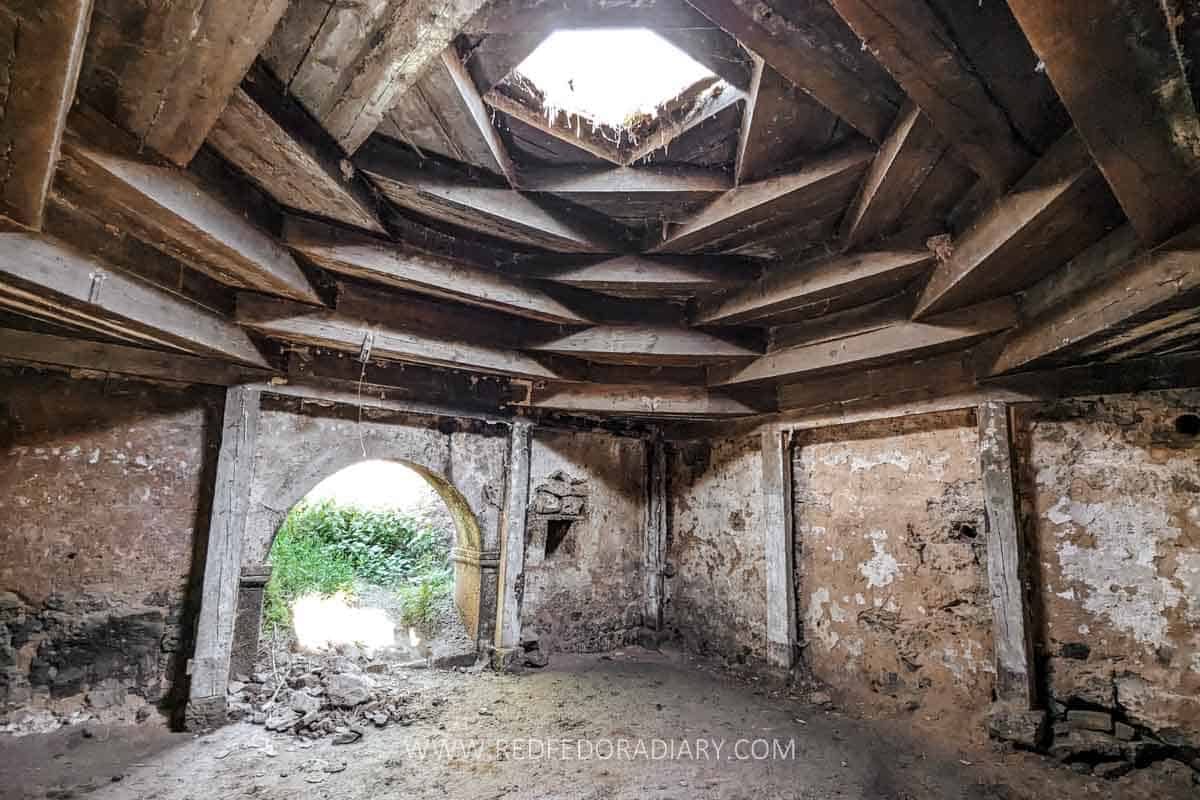
The village, though, has many such historical Meskhetian Odas that people still live in. During my last visit with Samtskhe-Javakheti DMO, the team took us to meet Meri and her parents to show us their gorgeous house.
Our unplanned visit did leave us in awe as we saw that beautiful pyramid-like ceiling painted in vibrant blue. At the same time, hand-knitted tablecloths and crochet lampshade adorned the living space that now is turned into a bedroom featuring a few old metal beds.
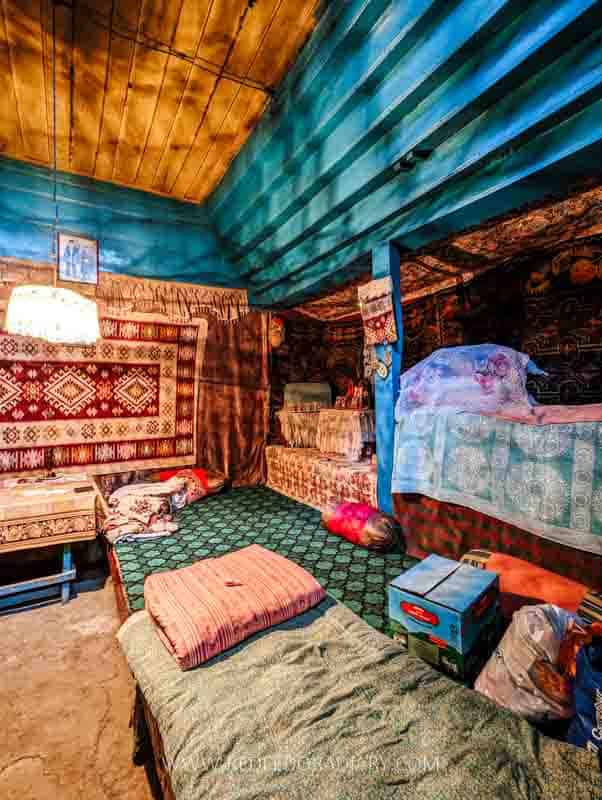
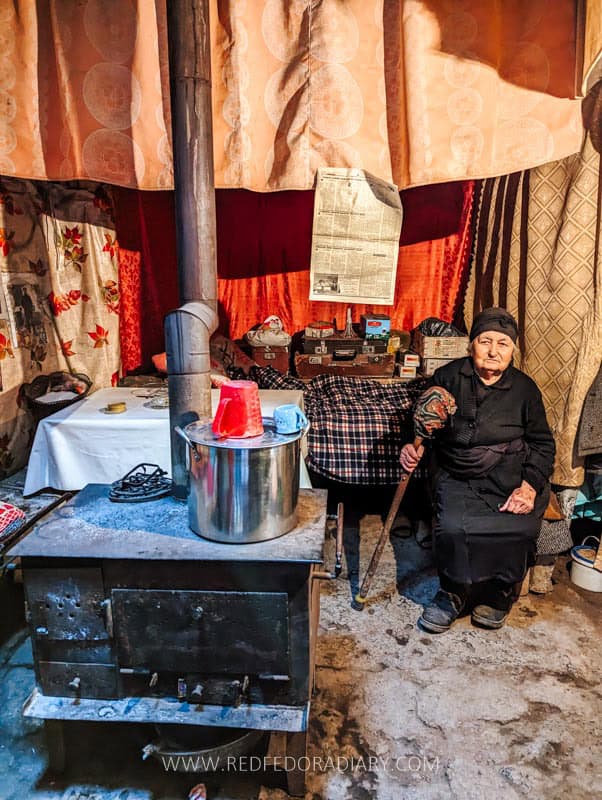
→ How to visit: The paved road to the village of Saro makes it easy to get there either from Aspindze, Akhalkalaki, or Akhaltsikhe. If you’re feeling more adventurous, tackle the 2.2 km Saro-Nijgori trail and explore more of the site.
Try authentic wine of the region at a convent
When it comes to wine, Kakheti and Imereti might grab the spotlight in Georgia, but know that vines thrive all over the country, including the picturesque Meskheti.
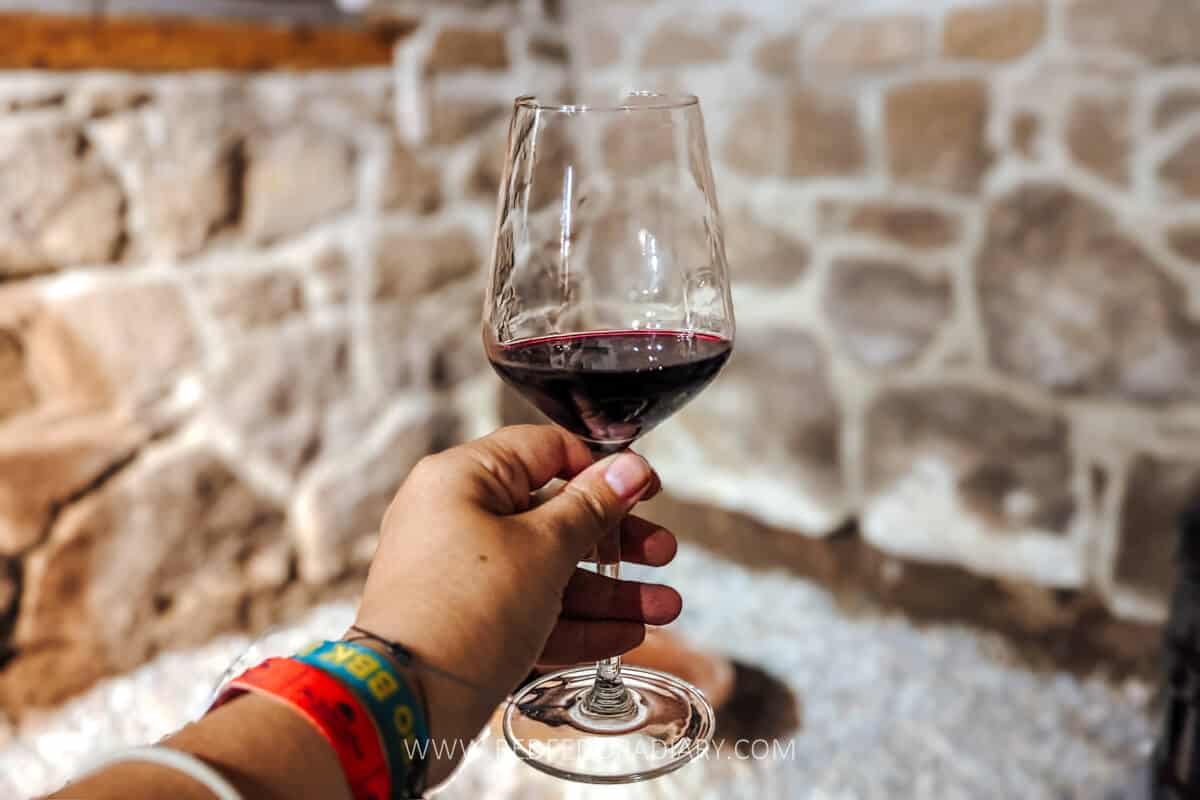
A cool tidbit sets this region apart – terraced vineyards elegantly crawl up the steep river banks. While some of those vineyards might be abandoned or inactive, many wine enthusiasts revive wine-making in Samtkshe-Javakheti by regrowing local grapes – Meskhuri Mtsvane being the most popular, along with Chitisvala tetra, Chitiskvertskha tetra, Shavi Aspindzura, Meskhuri Shavi, and Tamari’s Vazi.
If you’re seeking a wine experience that’s anything but ordinary and will leave a lasting impression, don’t miss the chance to participate in a tasting at Ude Monastery.
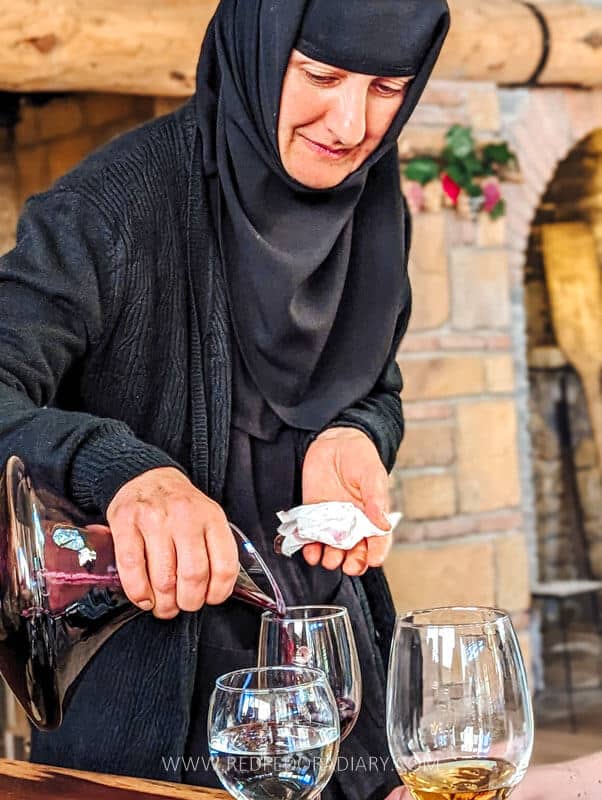
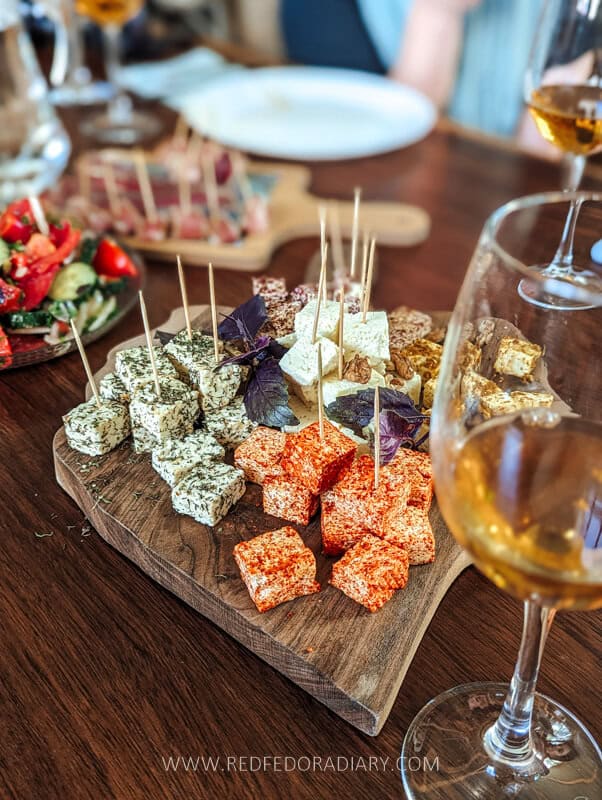
Father Grigol leads this Orthodox Monastery complex and is known for having an open heart and mind. He’s brought some seriously impassive initiatives to the table, all aimed at bridging the gap between the public and the church.
The nuns and monks at Ude grow their products, including wheat, whip up their wine from those precious Meskhetian grapes, and even have a snail farm (more on this below). And that’s not all. They open their doors to curious travelers and offer delicious gastronomic adventures.
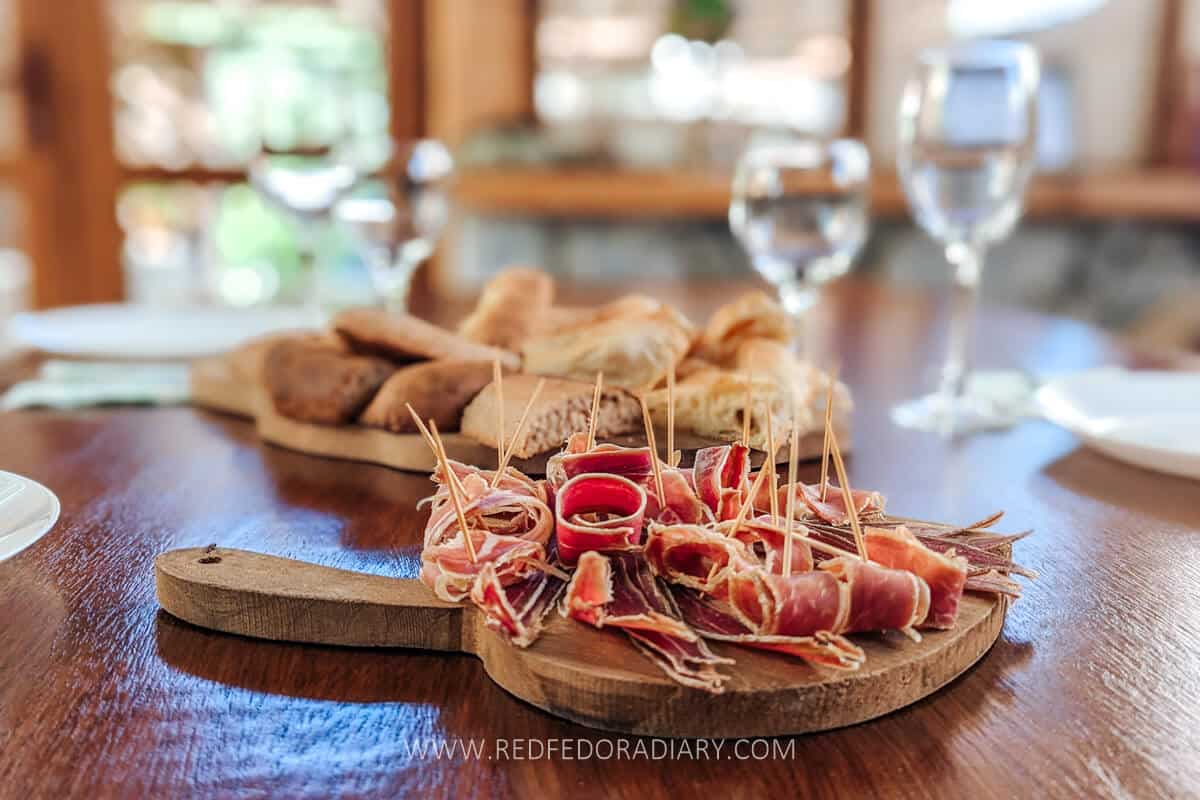
This, indeed, was something I have never experienced because monasteries and convents in Georgia are usually closed off for such events.
So, what’s a visit like? It starts with visiting a humble 6th- 7th-century church within the convent grounds and a small library before the big lunch. Our host was Sister Tamari, who took on the role of serving, explaining what the monastery does, and even offered a few toasts, too.
If you’ve never had a nun pour your wine and serve you food, let me tell you, it’s quite the affair, which proves how open-minded they are!
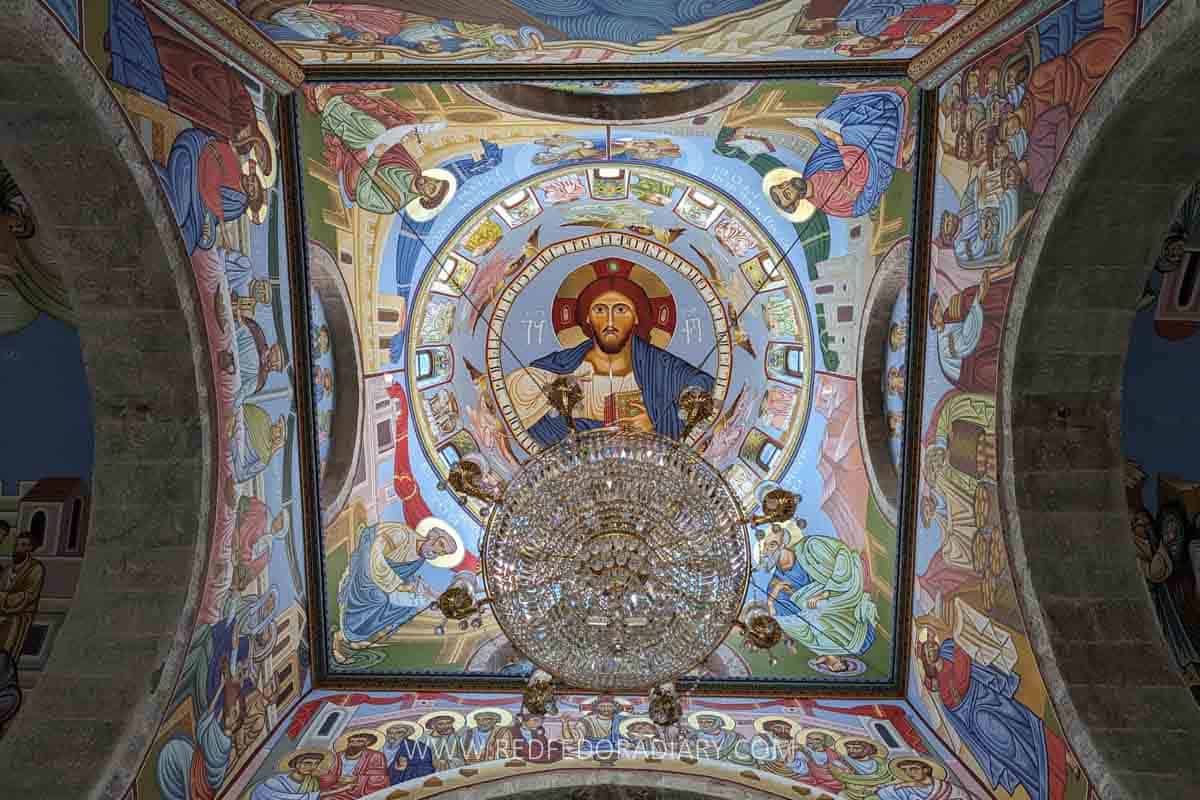
We tried all the local delicacies the convent makes on the site, including cheese with various seasonings and apokhti. Sister Tamari also brought an Asian-style sweet and sour pork stew with pineapples, which was a genuine surprise and a delight of flavors. She also informed us that they plan to open a shop in Tbilisi soon to sell their agricultural and handcrafted products.
After lunch, you can walk five minutes to the more prominent Assumption of the Holy Mother Church for beautiful and colorful recently painted icons.
→ How to visit: Ude Monastery is around a 30-minute drive from Akhaltsikhe or an hour from Aspindze. Contact them on Facebook or the Samtskhe-Javakheti DMO to book your wine tasting or lunch for help.
Discover the Doukhobor community and its traditions in Gorelovka
I mentioned at the beginning of this post that Samtskhe-Javakheti has diverse ethnic communities, each with its own unique story to tell. However, there’s something particularly captivating about the Doukhobors, the society that amazes and fascinates me the most.
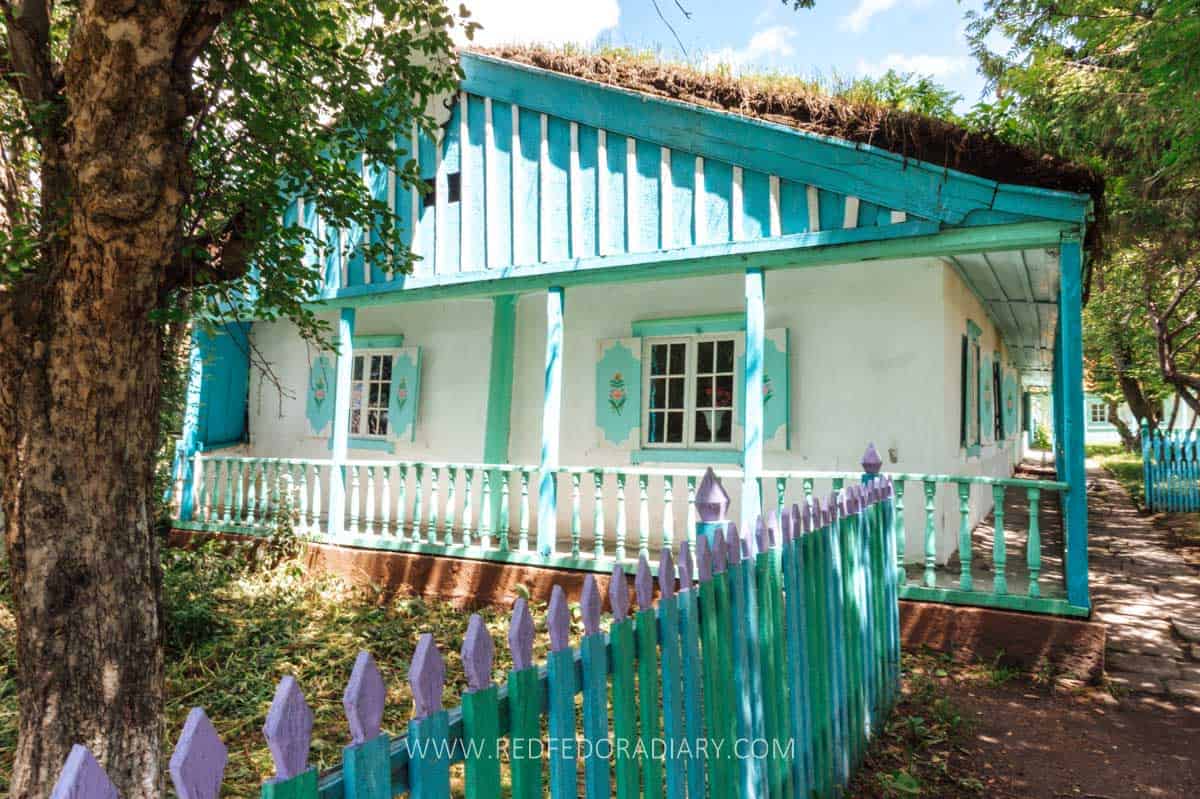
Hailing from the Russian Empire in the 18th century, the Doukhobors were a Christian sect known for their distinct beliefs. In Russian, the word Doukhobor means ‘spirit wrestler’.
Back then, they rejected the Russian Orthodox priesthood as they believed that God dwells in each human being and not in a church. Therefore, they replaced the Bible with orally transmitted psalms and hymns called the Living Book.
Due to their anarchist and pacifist beliefs, Russian Tsar Nicholas I exiled and forced them to emigrate to different parts of the world. More than 4,000 immigrated to Georgia and settled in six villages of Samtskhe-Javakheti and the Marneuli and Dmanisi areas.
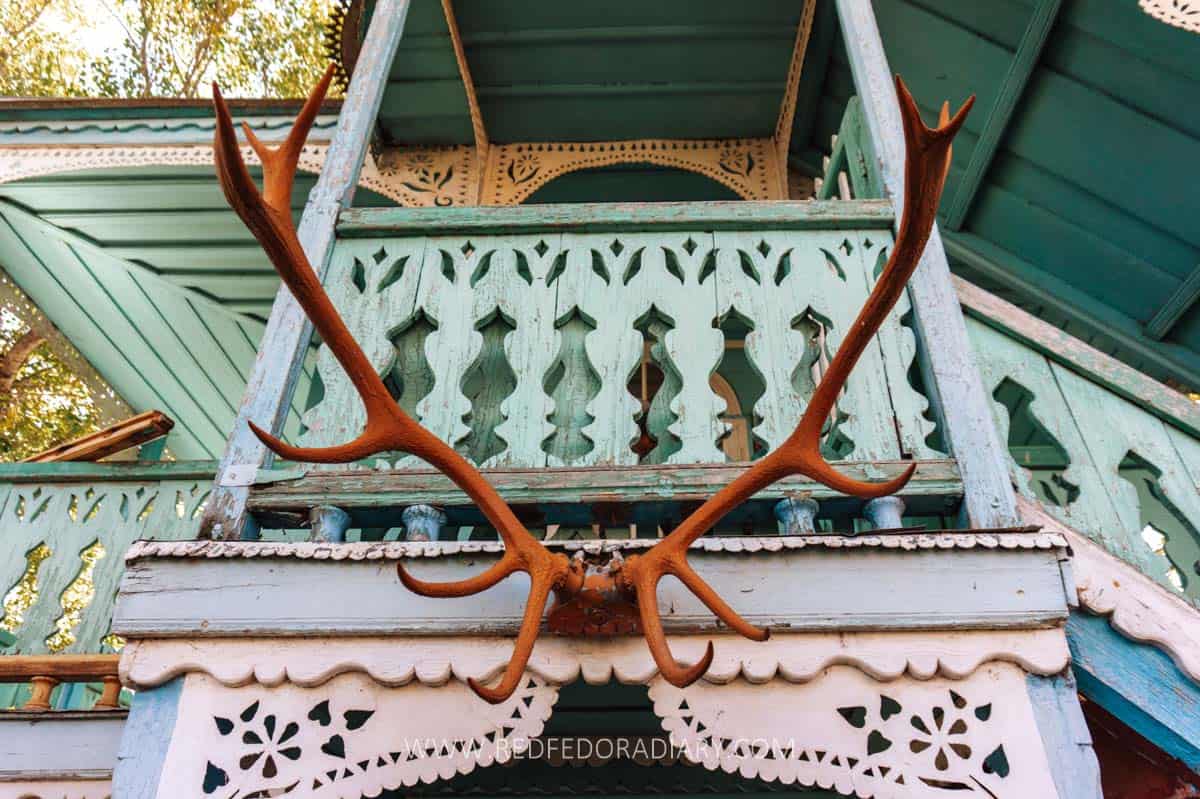
Many later left for Canada around the turn of the 20th century, and today, it has the biggest community of Doukhobors. The resilient group of around 130 individuals chose to remain in Georgia, but sadly, each year, their number decreases as many youngsters prefer to move away.
Nowadays, most of Georgia’s remaining Doukhobor families call Gorelovka home, close to the Armenian border. Russian is still their primary language, and they proudly uphold the customs of their ancestors, including the spiritual prayers every Sunday morning, dressed in their native clothes that look very Slavic.
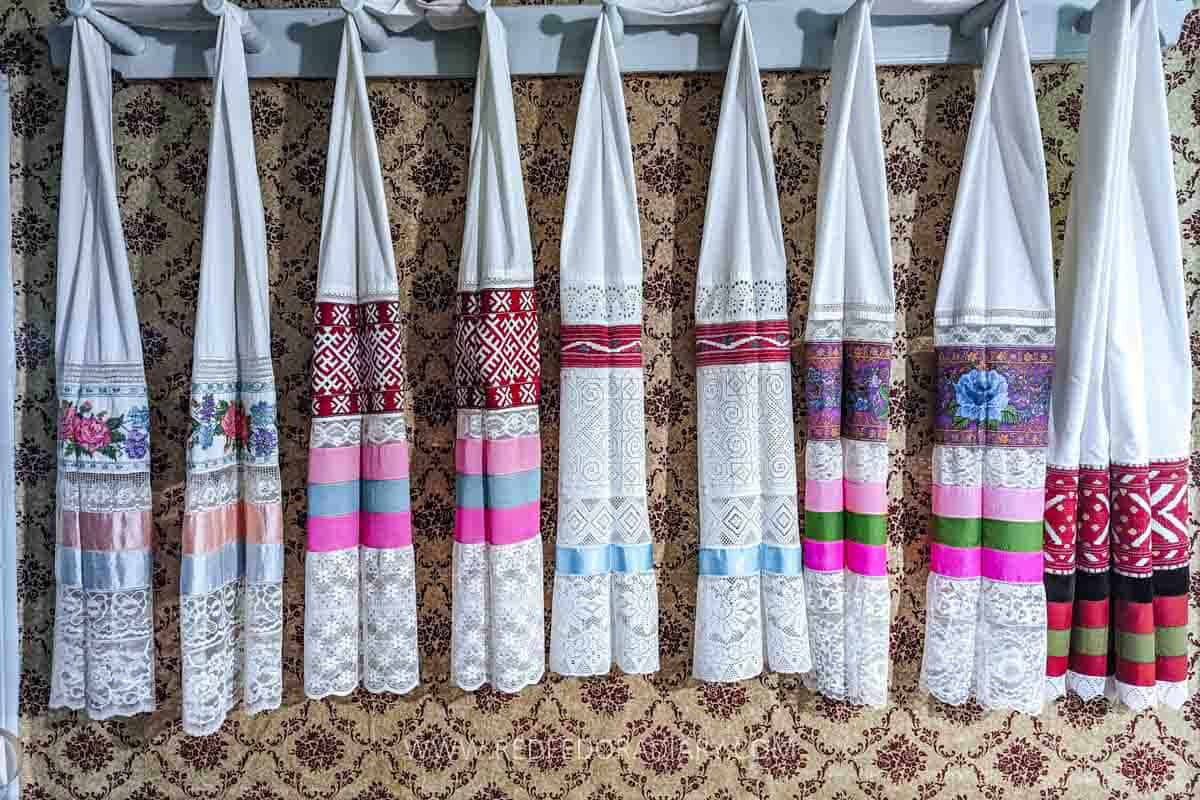
Like the rest of the Doukhobor villages, Gorelovka came into existence from the ground up by the first settlers. And let me tell you, their architectural style is quite impressive and perfectly reflects the harsh climate conditions of the area. Houses with turf roofs have wooden doors, windows, and shutters. The doors and shutters are painted in sky blue or ocean colors with artsy flora patterns, making it a picture-perfect setting.
The main gathering point of Doukhobors is the complex, which used to be an orphanage and a communal storage unit for the community back in the day to overcome the harsh winters together. Today, it serves as a gathering point during festivities and a spiritual place for Sunday prayers.
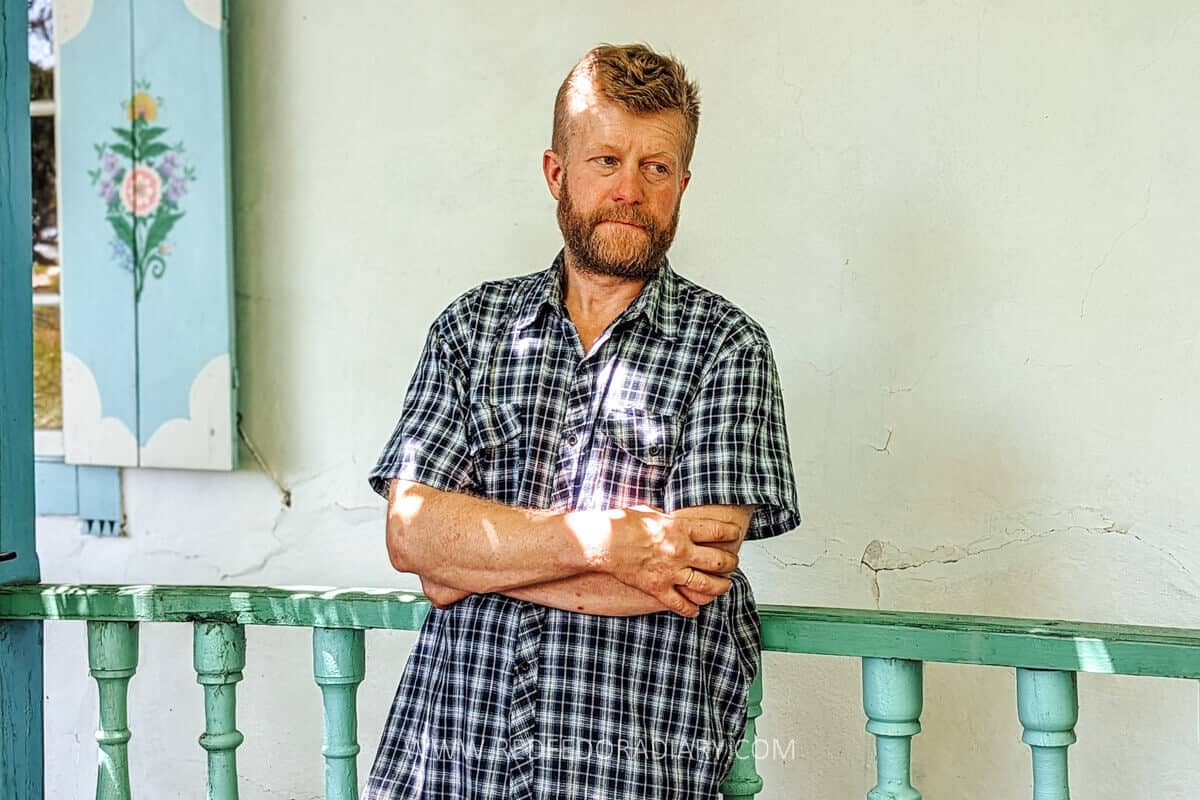
Traditionally, the Doukhobors have kept to themselves, but things are changing. Community members are launching projects and initiatives to share their history with fellow Georgians and curious tourists but also preserve it.
I have been to Gorelovka several times and have met a few elderly too. But my last visit with Samtskhe-Javakheti DMO was unique because I got to meet Yuri – a prime example of this new wave of being open to visitors. He was born and raised in Borjomi but decided to move back to Gorelovka and be part of his ancestral community.
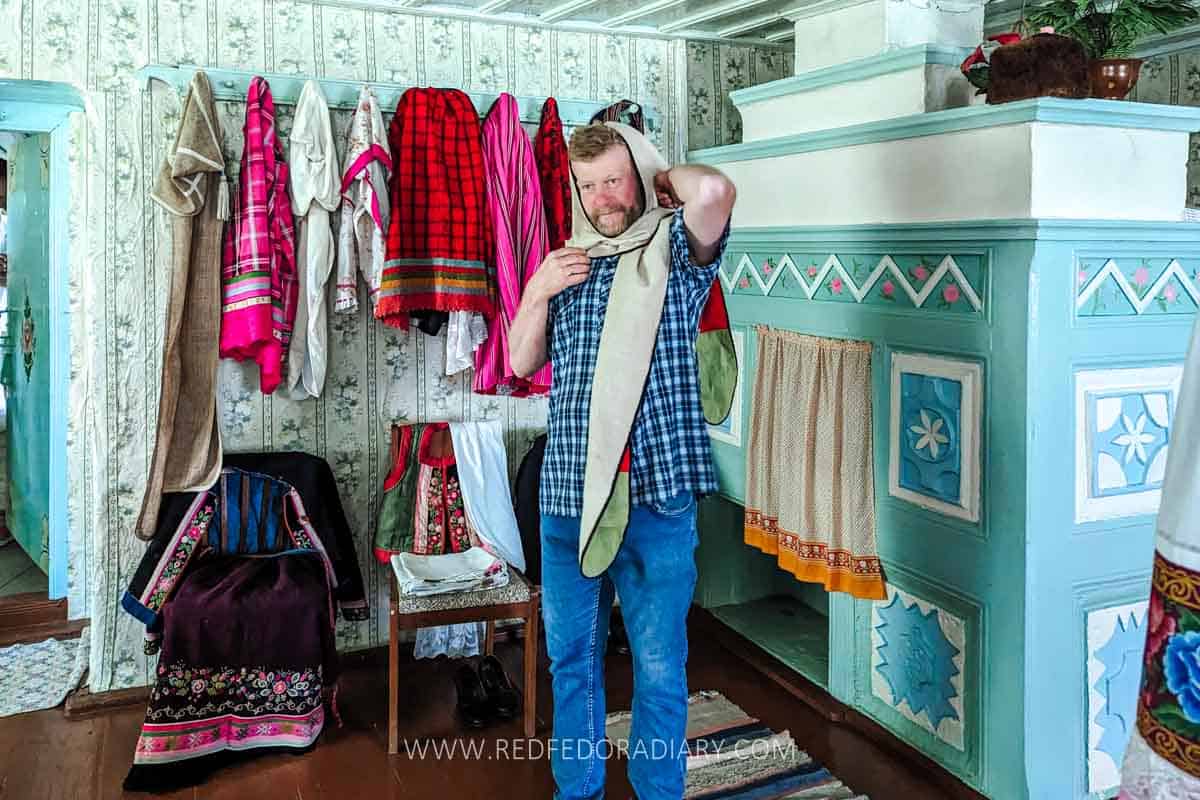
He did hesitate to tell us the history of Doukhobors from the beginning, why they neglected the Russian church, and what hardships they have gone through when immigrating and settling in Georgia.
Then, he led us into the main hall (women and men have separate entrances), where scarf-like hand-embroidered textiles adorn the walls. Yuri explains that they use them as decorations in the house and hang them on the clocks or windows, for instance.
Yuri also opened a second room, typically closed to visitors, and showed us ceremonial outfits for festivities and weddings made from handmade wool hanging next to a hefty and beautiful Russian oven.
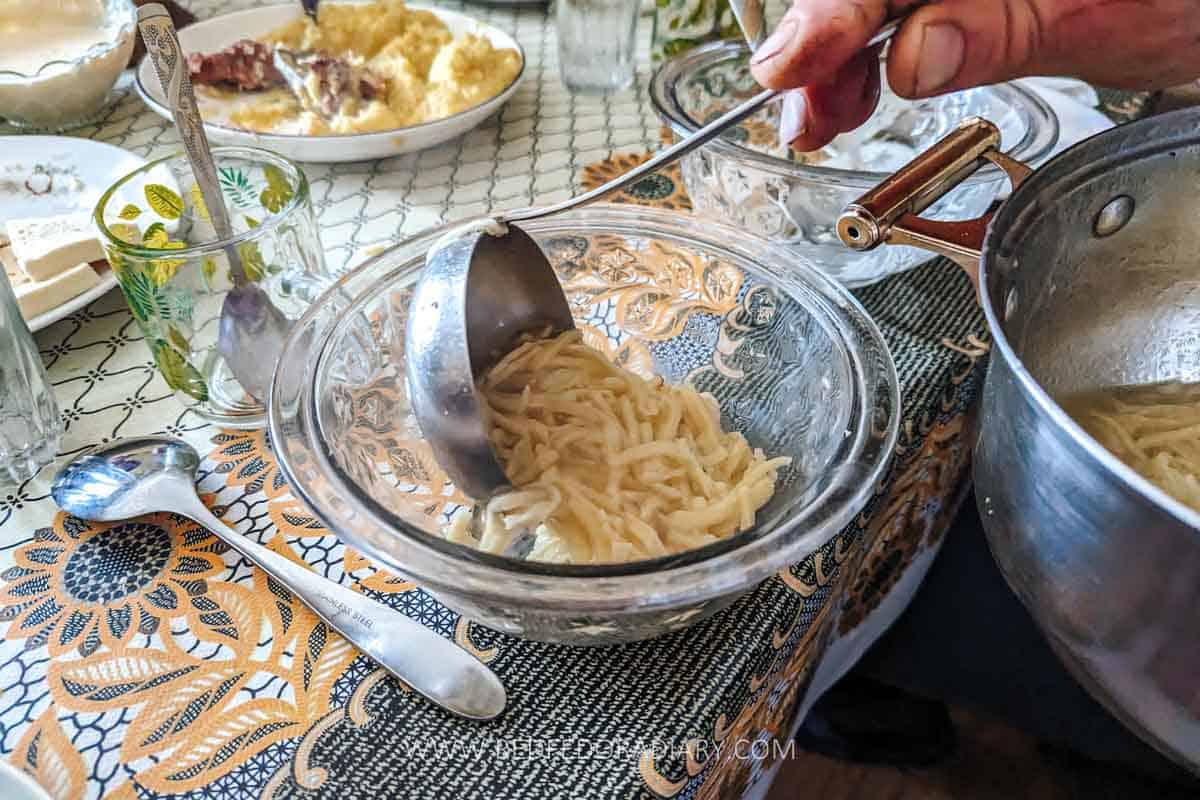
After the tour, he and his family warmly welcomed us into their home for a fantastic feast of traditional Doukhobor meals. Potato pies baked in the Russian oven were everyone’s favorite. We also tried flavorful soup with handmade noodles, delicious and soft meat with mashed potatoes, wild herbal tea, and honey.
As a side note, Tambovka is one of the Doukhobor villages on the shores of Paravani Lake that is almost deserted but has a newly repainted house that’s a pop of color in this sleepy village.
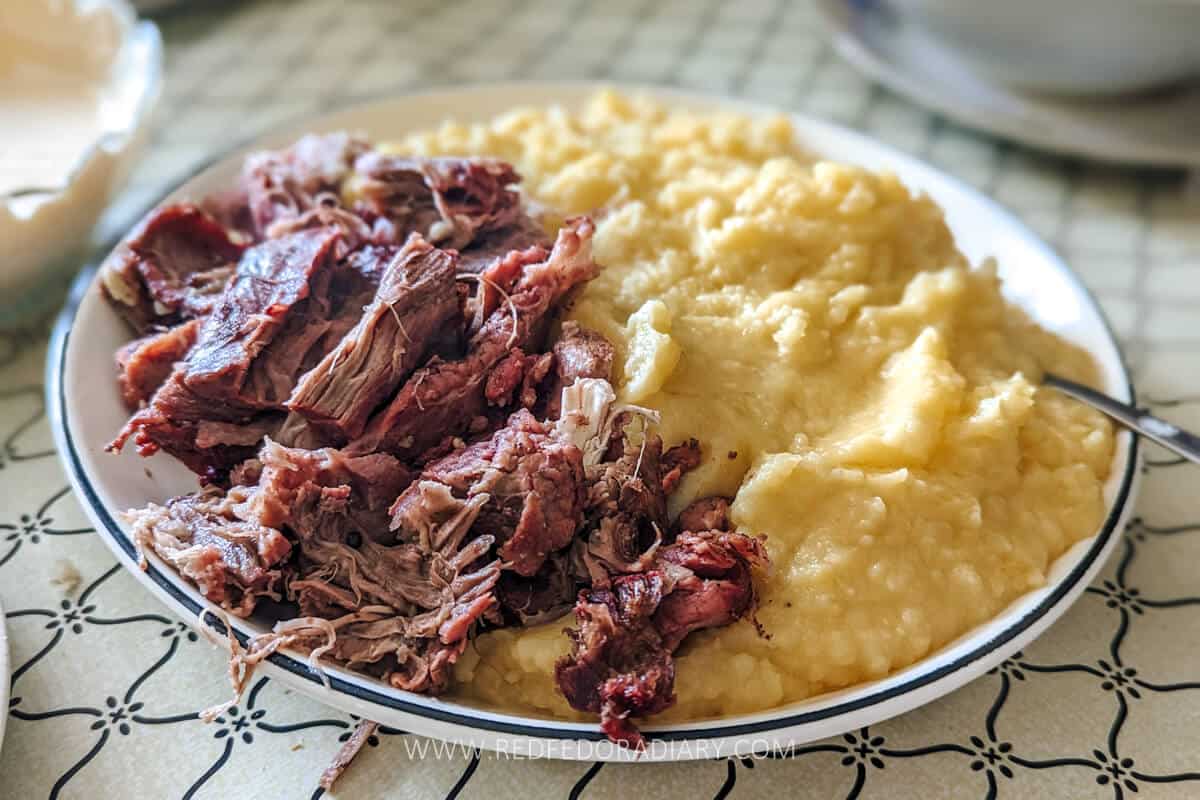
→ How to visit: You can walk inside the so-called ‘Doukhobor House’ courtyard in Gorelovka. While you can’t venture inside the buildings alone (they are locked), there’s still plenty to soak in. Remember, this place holds sacred significance for the community, so treat it with the utmost respect. Contact Samtske-Javakheti DMO if you want a guided visit with Yuri or lunch at his family house.
Be amazed by stork nests perched on electricity poles
When driving from Ninotsminda towards the Doukhobor villages, it’s hard to miss a fascinating spectacle – white stork nests atop the electricity poles. And if you stop and wait for a few minutes, chances are one of them will return home so you can admire them in their natural habitat.
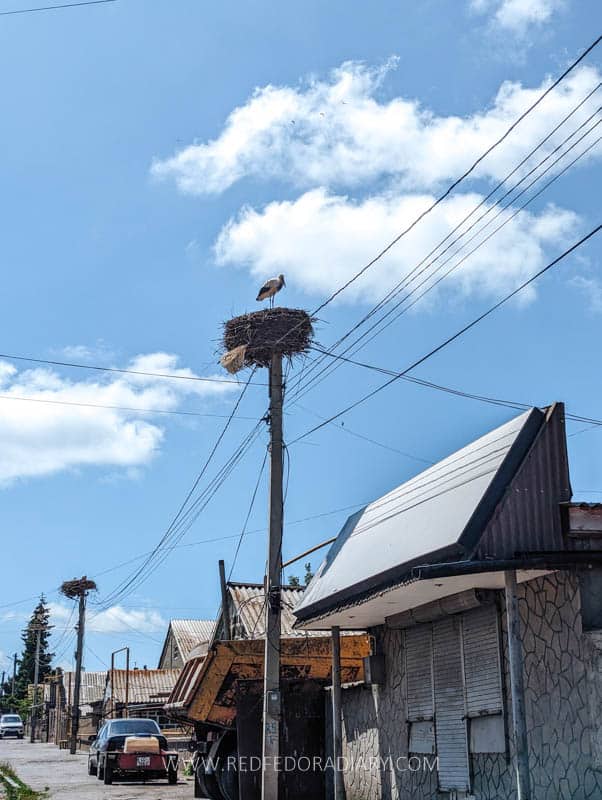
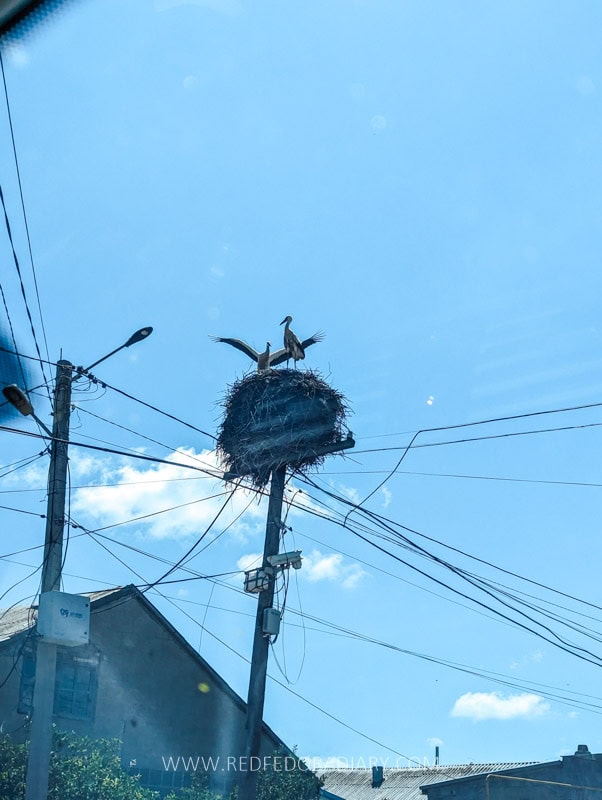
Locals believe that when a stork makes a nest in front or near one’s home, it will bring happiness and luck to that family.
Since storks are very loyal species who don’t cheat on their partners and don’t leave the houses they’ve built (even if they migrate to warmer areas, they return to the same nest), Doukhobors believe that the birds leave their nest next to the Doukhobor houses only when the residents leave and never come back.
Enjoy the scenery at Georgia’s largest lake
Paravani, a volcanic lake 2,073 meters above sea level, attracts visitors with its stunning beauty and a hoard of legends and mysteries enshrouding it.
Legend has it that in the 4th century, Saint Nino, the evangelist from Cappadocia who brought Christianity to Georgia, blessed the lake’s shores. Here, she ignited a spiritual blaze that eventually led the entire nation to embrace Christianity.
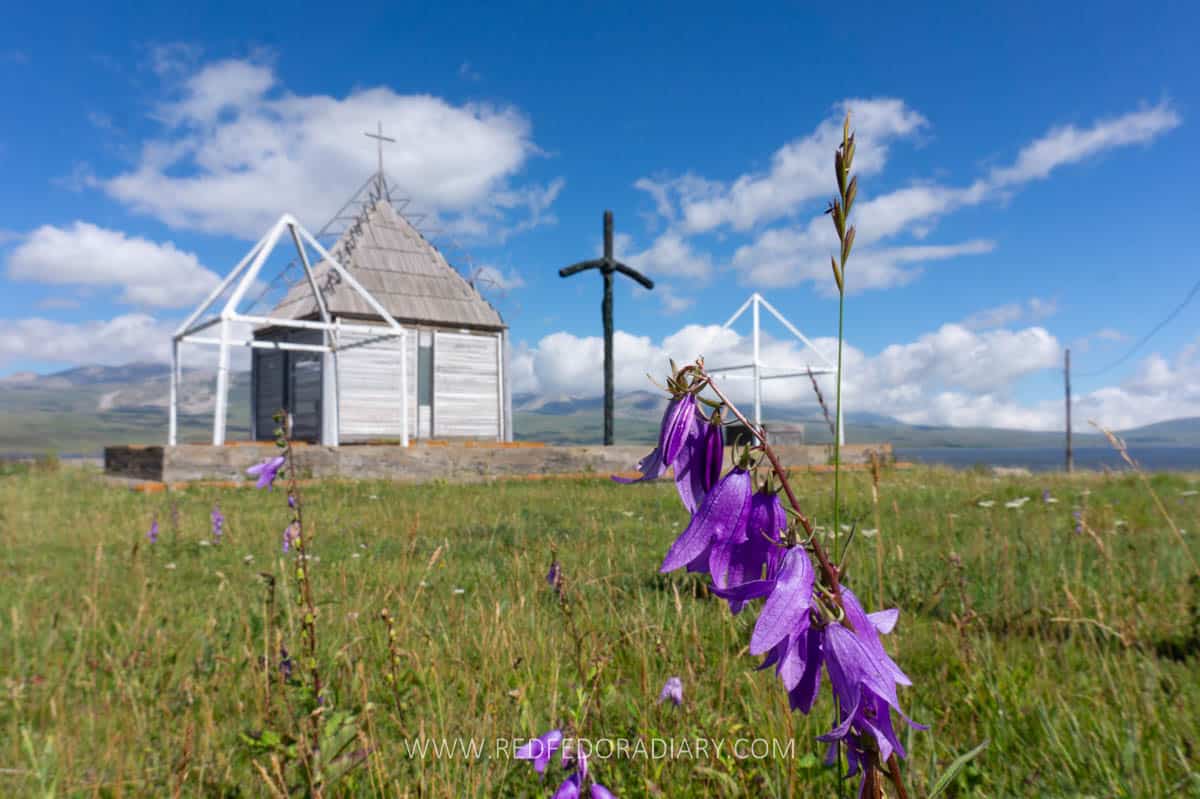
And there’s more intrigue beneath the lake’s depths. Dark waters conceal an array of unknown puzzles and mysteries. A few years ago, divers uncovered peculiar formations beneath its surface that are believed to be ancient burial sites.
They discovered artifacts from daily life, utensils, and fishing gear, tracing back to the 4th century BC. Back then, the lakebed was apparently a dry land where now a forgotten civilization thrived. Unfortunately, divers could not continue their excavations for various reasons, obscuring the civilization’s identity.
Fast forward to today, Paravani spans around 40 aq. Km, reigning as Georgia’s largest lake by surface. The waters at high altitudes remain cool year-round, often blanketed by snow. The climate is as harsh as it is breezy – it is always very windy near the shores, even if you come here in summer.
The quaint village of Poka graces the lake’s southern banks, home to the St. Nino Convent, while four other villages surround the lake – Paravani, Tambovka, Vladimirovka, and Aspara.
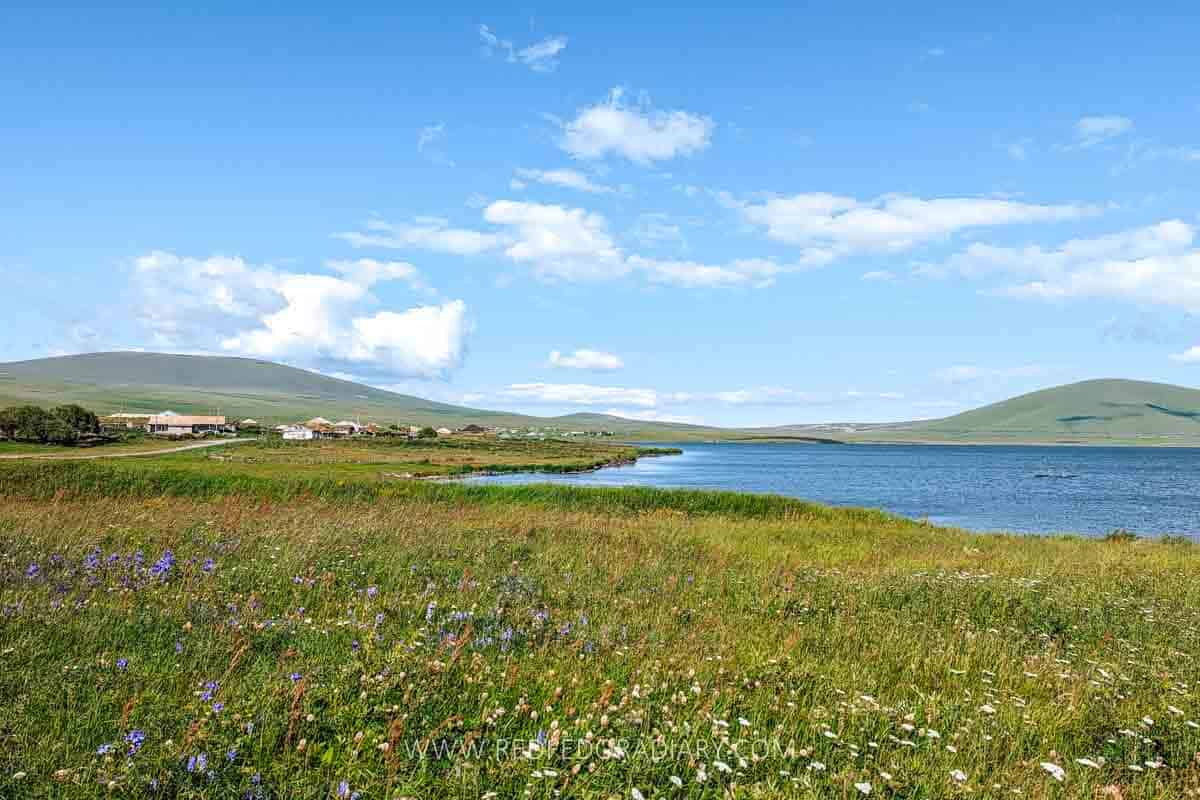
Shaori Fortress (see more on this below), the megalithic structure is pretty close, bringing a historical touch to the area.
In winter months, Paravani Lake freezes off, and the whole area turns into a real-life ice wonderland.
→ How to get there: It is best to rent a car to explore Paravani Lake as public transport is very scarce here (if it even exists). Alternatively, book a GoTrip driver from Tbilisi to Paravni, with optional unlimited stops between or after.
Discover handcrafted gems at the Poka St. Nino Convent’s shop
As you are at Paravani Lake, don’t miss Poka St. Nino Convent, a true gem within the Samtskhe-Javakheti region. Similar to Ude Monastery, a few nuns grow their own products and whip up a fantastic assortment of treats like jams that burst with flavor, tangy preserves, zesty spice mixes, handmade chocolate bars, tea mixes, and even natural remedies from local plants and herbs.
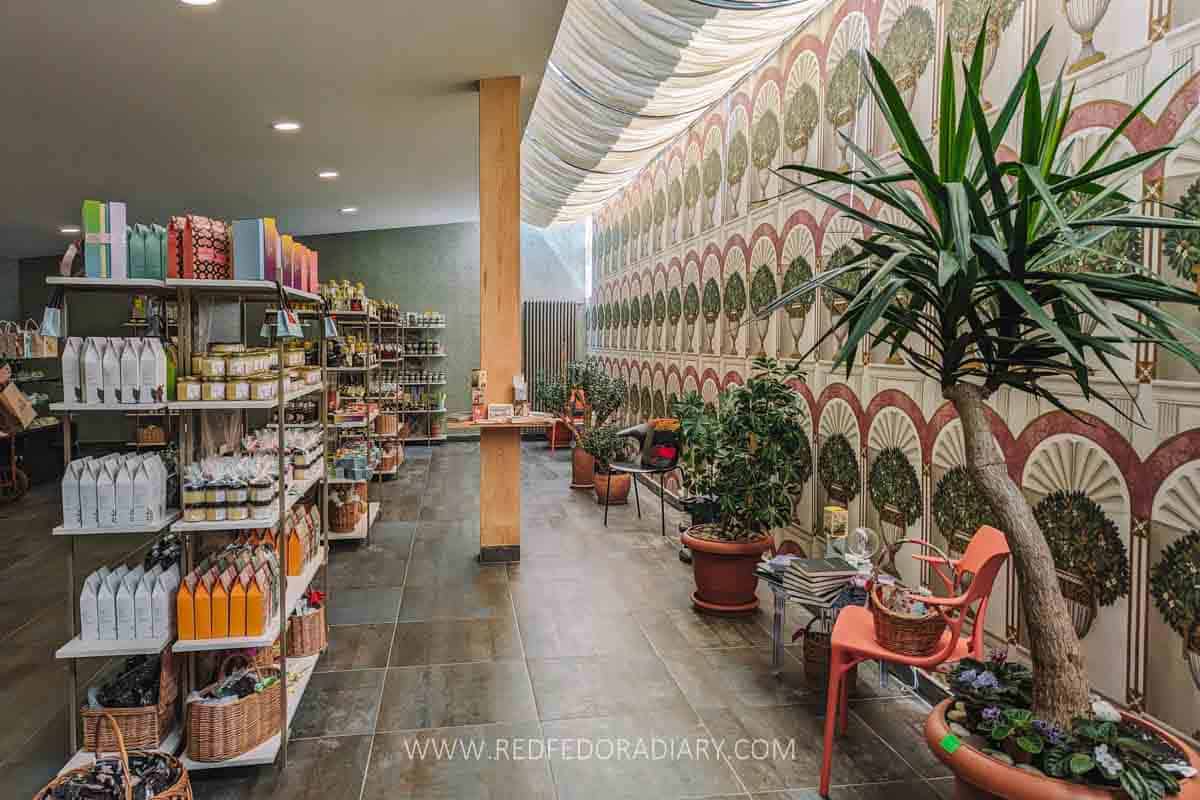
Being here several times, I always buy a few things and especially love their bees milk face cream and lip balm. On my last visit, I was impressed by the renovation it underwent, looking even more beautiful than it was. Their souvenir shop is much bigger and now includes an even more comprehensive array of goods than I remember from two years ago.
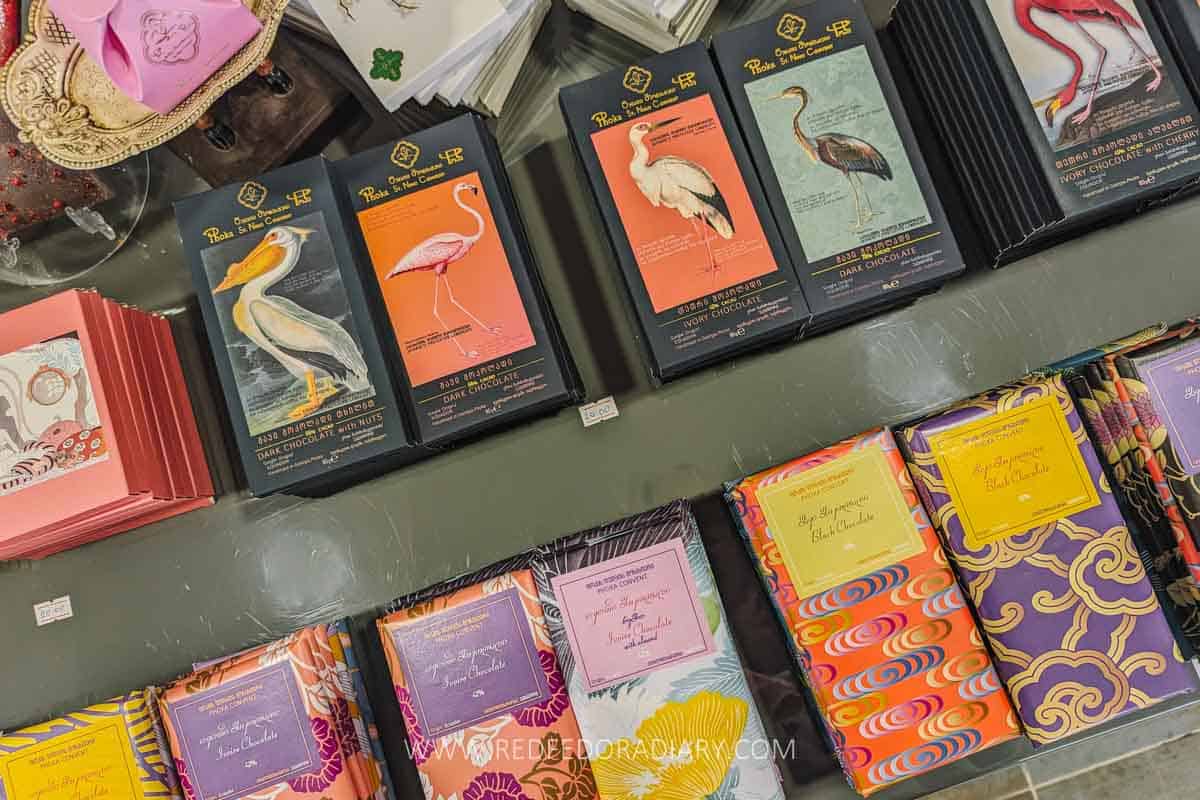
Besides stocking up your pantry with artisanal delights, you can buy handmade items such as textiles, ceramics, and other gift boxes.
→ How to visit: The convent is open daily from 10 am to 6 pm. Google Maps has two pins – one St. Nino Monastery (for monks) and one St. Nino Convent (for nuns). You obviously want the convent, but since you’ll be in the area, I advise you to stop by the monastery, too.
Hike up to the ancient Cyclopean fortress
Samtskhe-Javakheti boasts a pair of captivating Bronze Age archaeological marvels, namely Abuli and Shaori. While these sites hold immense significance, their complete excavation has yet to occur, shrouding their origins in a veil of mystery.
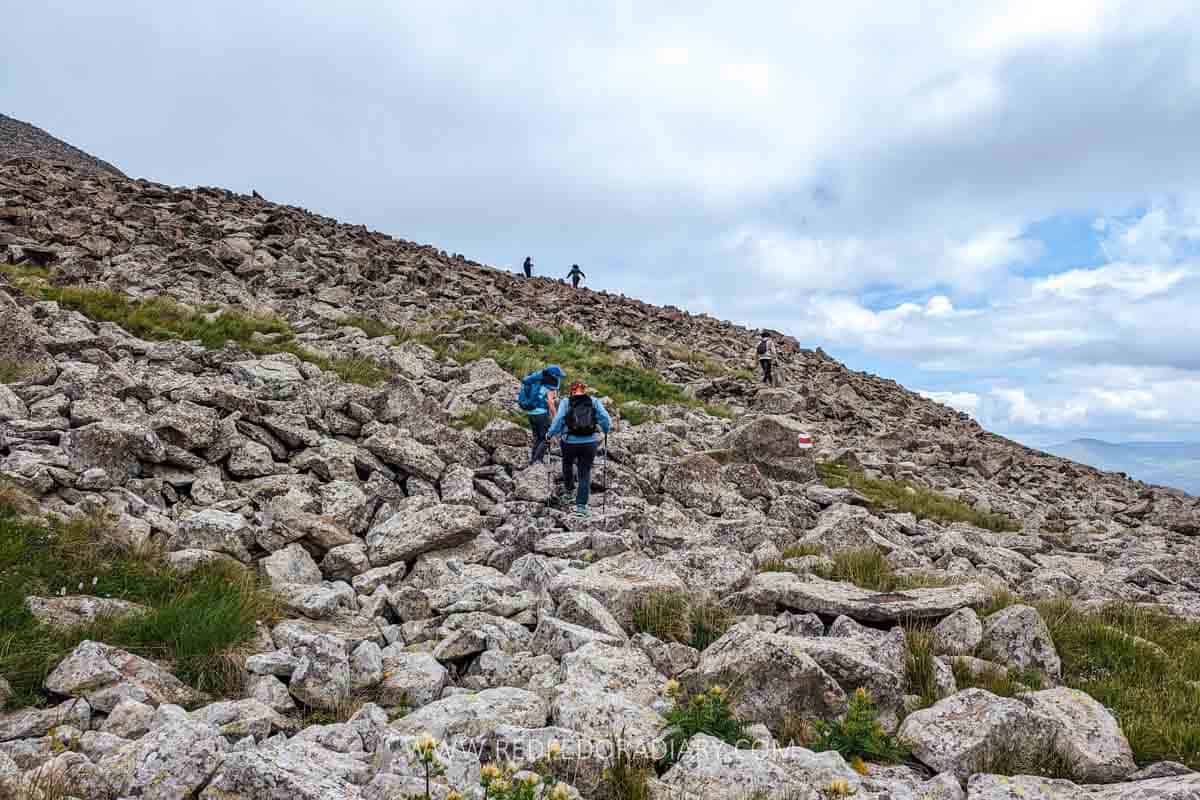
Among them, the Shaori Fortress, perched on the crest of the mountain Shaori, is more accessible than Abuli. This Cyclopean-style stronghold, crafted using colossal basalt blocks fit together without mortar or binding agents, is a testament to ancient engineering excellence.
The hike starts from the charming and sleepy Tambovka village, snuggled along the northern fringes of Paravani Lake, taking around 3-4 for a round trip, beginning at the mountain’s base. As you make your way, keep an eye out for a mix of painted flags and pyramid-like stone marks.
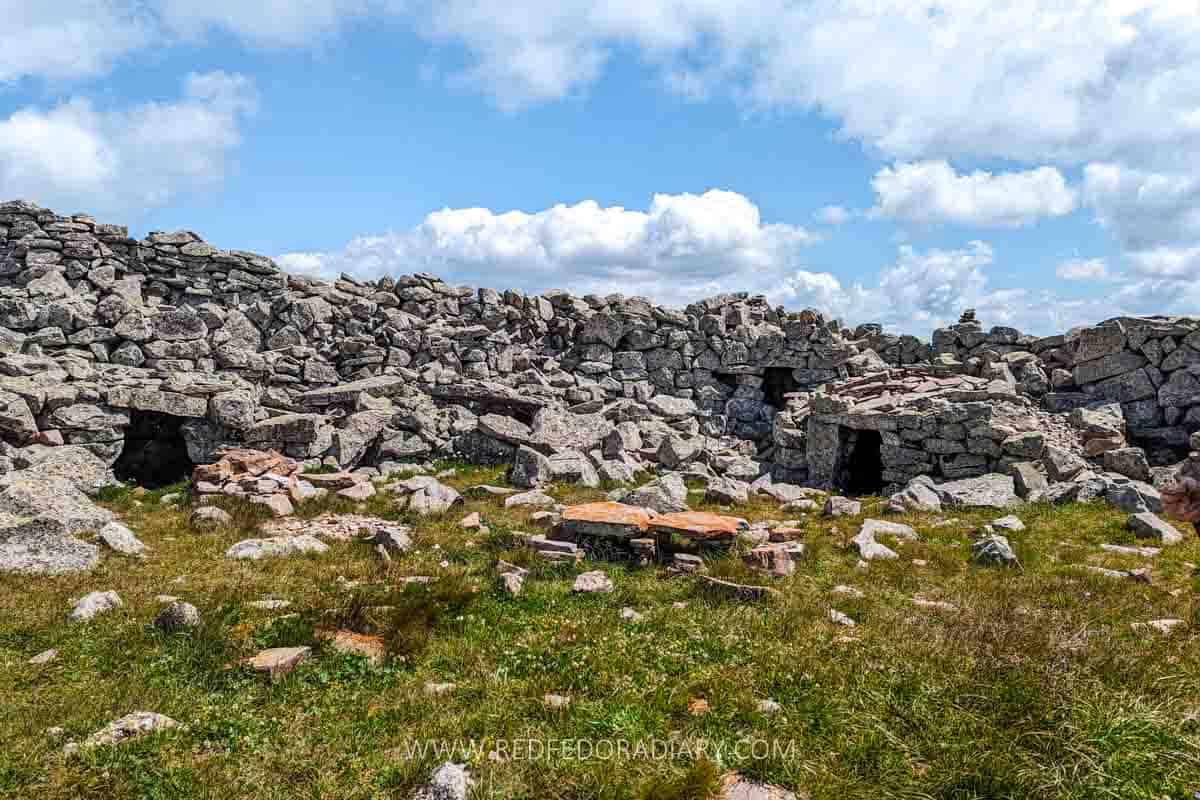
The origins of Shaori Fortress trace back to around 2000 BC. Scholars have juggled the idea that it could have served as a strategic outpost or a holy burial ground. Interestingly, the fortress’s main entrance aligns with the sun’s path on the solstice days, creating another belief that it could have been a sacred temple.
Climbing to the summit involves a bit of rock hopping – think uneven terrain and large boulders, making this route best for those with good hiking mobility.
→ How to hike the fortress: Tambovka, the trailhead, is around a 50-minute drive from Tsalka and Ninotsminda. Once there, you can get dropped off at the mountain’s base to kick off your ascent or track a little extra distance from the village if you’re up for the challenge.
Elevate your beer game by savoring Qvevri brews at Amphora Beer
Zaza Zedgenidze is the brains behind the exquisite microbrewery known as Amphora Beer in Aspindza. He got inspiration from Georgia’s famed wine-making heritage and his fondness of beer to make one-of-a-kind beer, or ludi in Georgia, in the clay qvevri Georgia makes its wine in.

He makes Belgian and German-style lagers out of Georgian hops and wheat varieties, some of them literally grown wild behind his courtyard fence. The fermentation clay qvevri gives his beers a distinctive taste.
Besides beer tasting, Amphora Beer also offers lunch or dinner service. During our visit, we were treated to a very remarkable dinner with snails (made with Zaza’s special secret sauce) and a beef dish slow-cooked in sealed clay pot ketsi seasoned with beer and tarragon and sealed with a clay lid (that you break with a hummer once done).
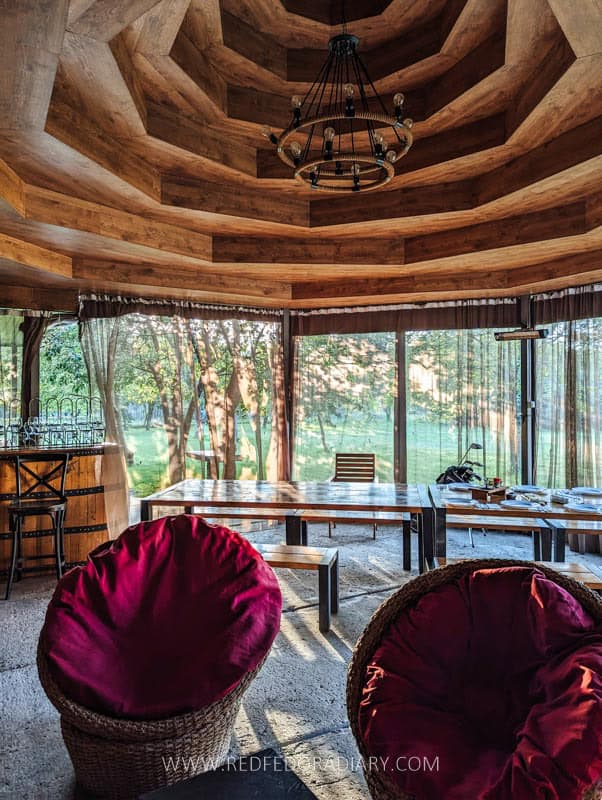
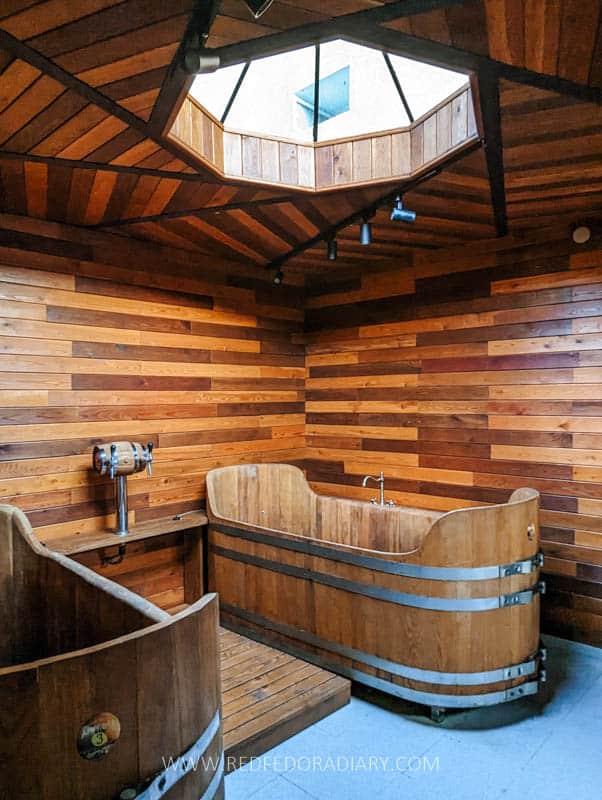
Oh, but the story doesn’t end there, as it isn’t just a spot for a meal and brews – it’s a whole experience. You can stay overnight at their cozy guest house, dip into the refreshing outdoor pool, and even indulge in a beer spa – that’s right, a spa with an unlimited flow of tap beer right next to your barrel bathtub.
Tip: You can buy Amphora Beer at Abragi Bar in Tbilisi
→ How to visit: Amphora Beer is conveniently situated between Akhaltsikhe and Akhalkalaki. You can also make a lunch stop here if you plan to visit Vardzia. For those thinking about staying overnight, click here to book the room. Beer tasting starts from 30 GEL a person and can be booked via the Facebook page. You can book the beer spa on their website. Zaza speaks English very well and is always happy to explain his brewing techniques and answer your questions.
Venture to a quiet village straddled on a peninsula
Tabatskuri Lake, located on the border of Borjomi and Akhalkalaki municipalities, is perched gracefully at an elevation of 1,991 meters above sea level.
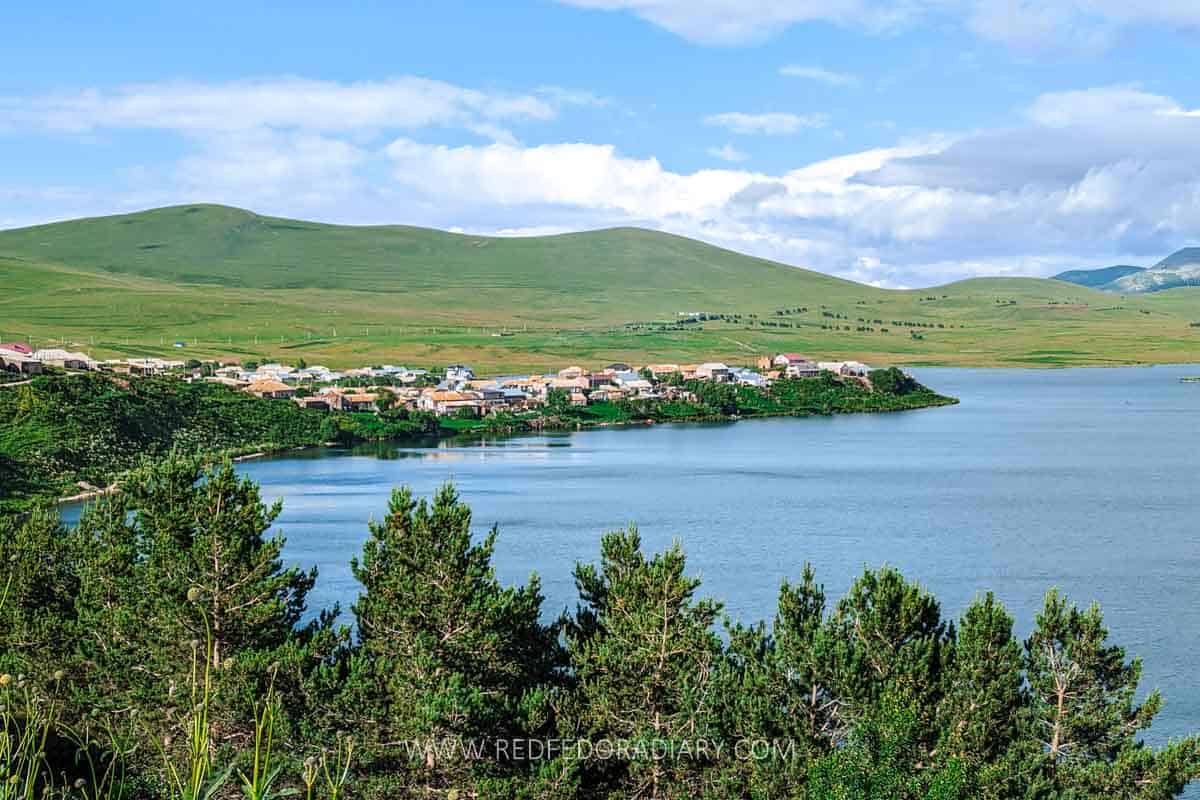
It is no ordinary lake, molded by the ancient lava flows and nurtured by the hidden streams of underground waters, snowfall, and rainfall. During winter, the lake freezes completely, adding another layer of enchantment.
Tabatskuri Lake has many fishy residents, including trout, Common barbel, and Eurasian carp. It is also home to a Velvet Scoter. As I mentioned above, my friend Saxon lived here to document these unique species and released a film titled Mr. Velvet Scoter, which you can watch on YouTube.
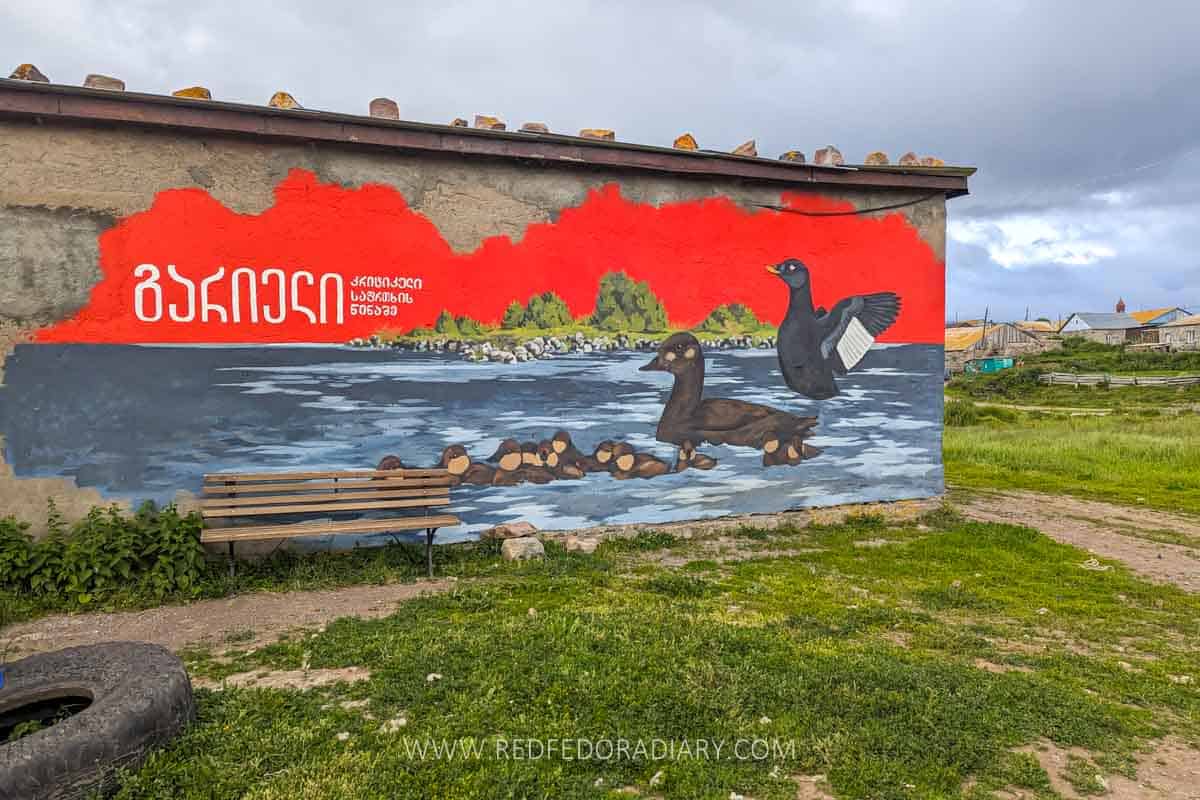
Two quaint villages, Tabatskuri and Moliti, stand on the shores of the lake. Tabatskuri village is a unique sight in itself, perched upon a peninsula that elegantly extends into the lake, creating a captivating interplay between land and water.
The synergy of the deep blue lake, the vast open spaces, and the majestic mountains guarding the area make for a remarkable panorama.
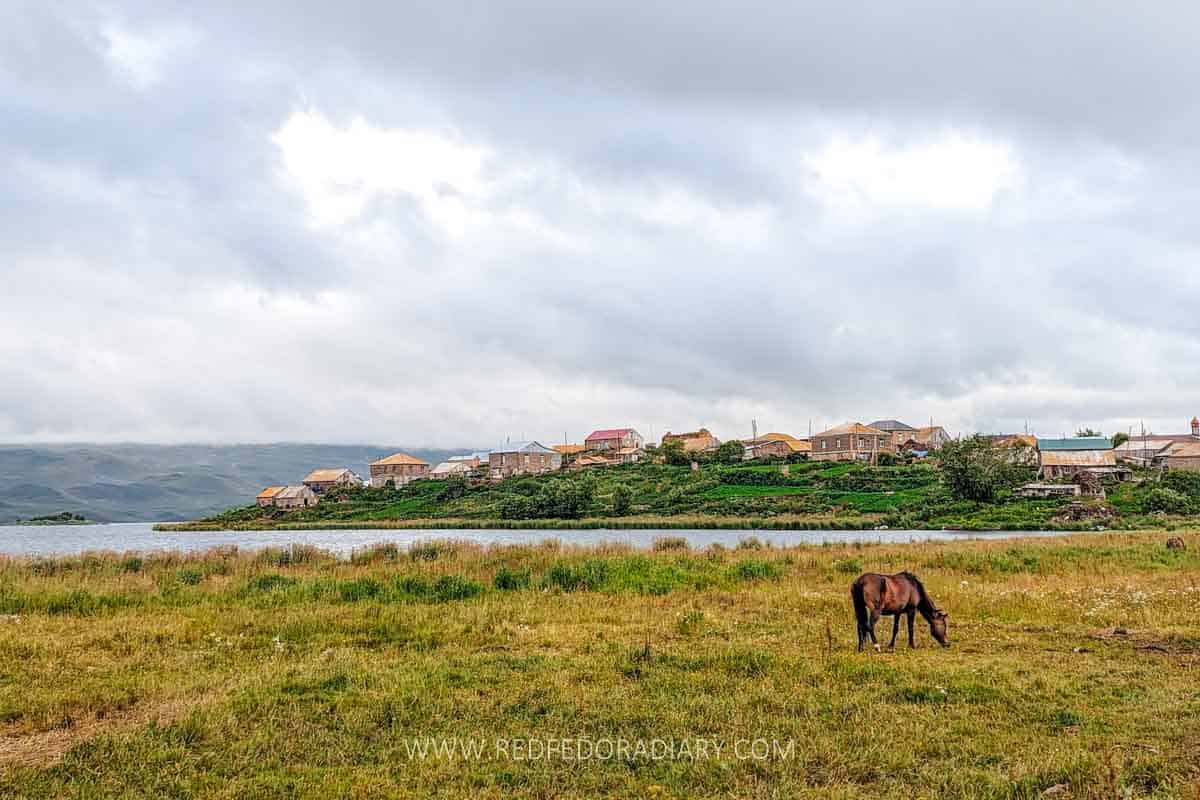
For lunch, to try delicious local fish such as trout or European cisco, go to Tabatskuri Fish House restaurant.
→ How to get there: The Tabatskuri Lake and the village are around 55 55-minute drive from Akhalkalaki. The Borjomi-Bakuriani road to the lake is not in great shape, so I don’t recommend driving there.
Samtskhe-Javakheti travel planning tips
Best time to visit Samtskhe-Javakheti
Samtskhe-Javakheti boasts a diverse climate with an average annual temperature fluctuating from a chilly -8C to a warm 27C (17.6F – 80.6F).
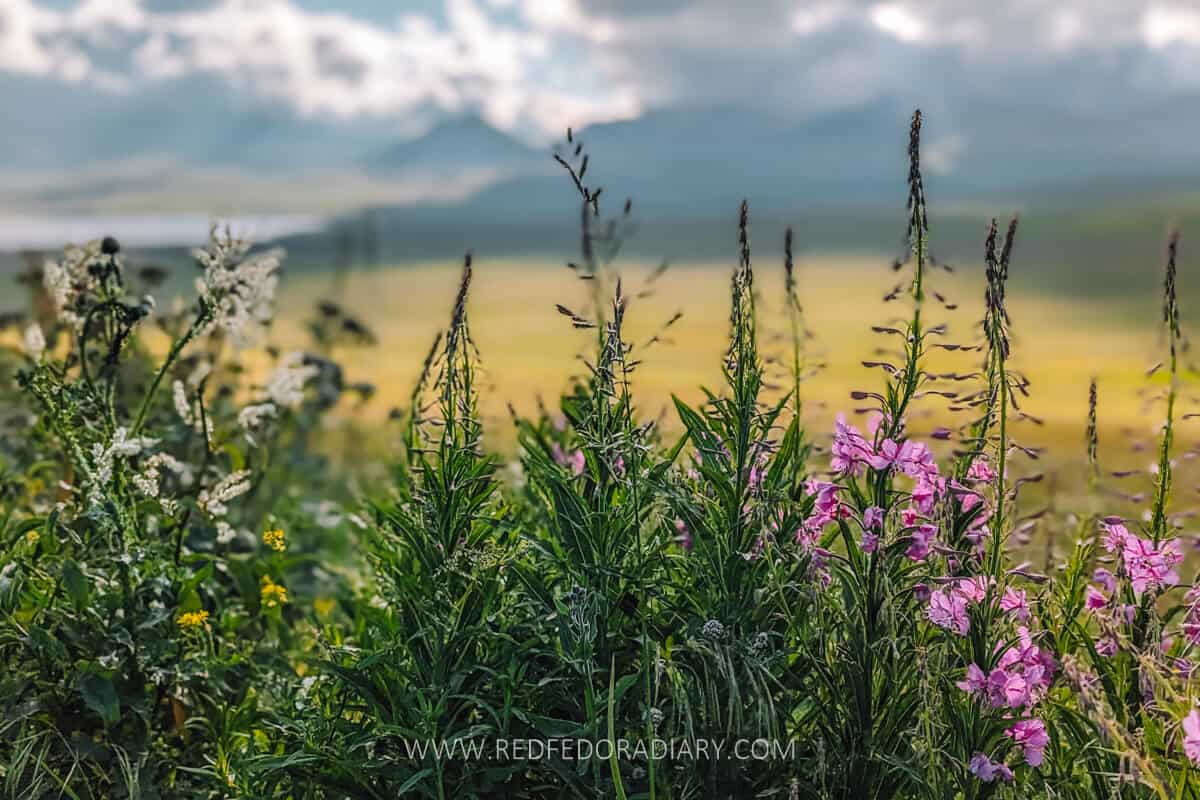
A moderately dry, subtropical mountain climate characterizes the Samtskhe area with delicate snowfall winters and warm summers. Javakheti, in contrast, is drier and crisper, with cold winters and cool, refreshing summers.
Winters here are pretty harsh, with cold days lasting at least 6-7 months of the year. That’s why it was unofficially nicknamed the ‘Arctic of Georgia.’ Lakes freeze in winter, and snow covers everything, including mountain peaks and roads, making navigating the area slightly tricky.
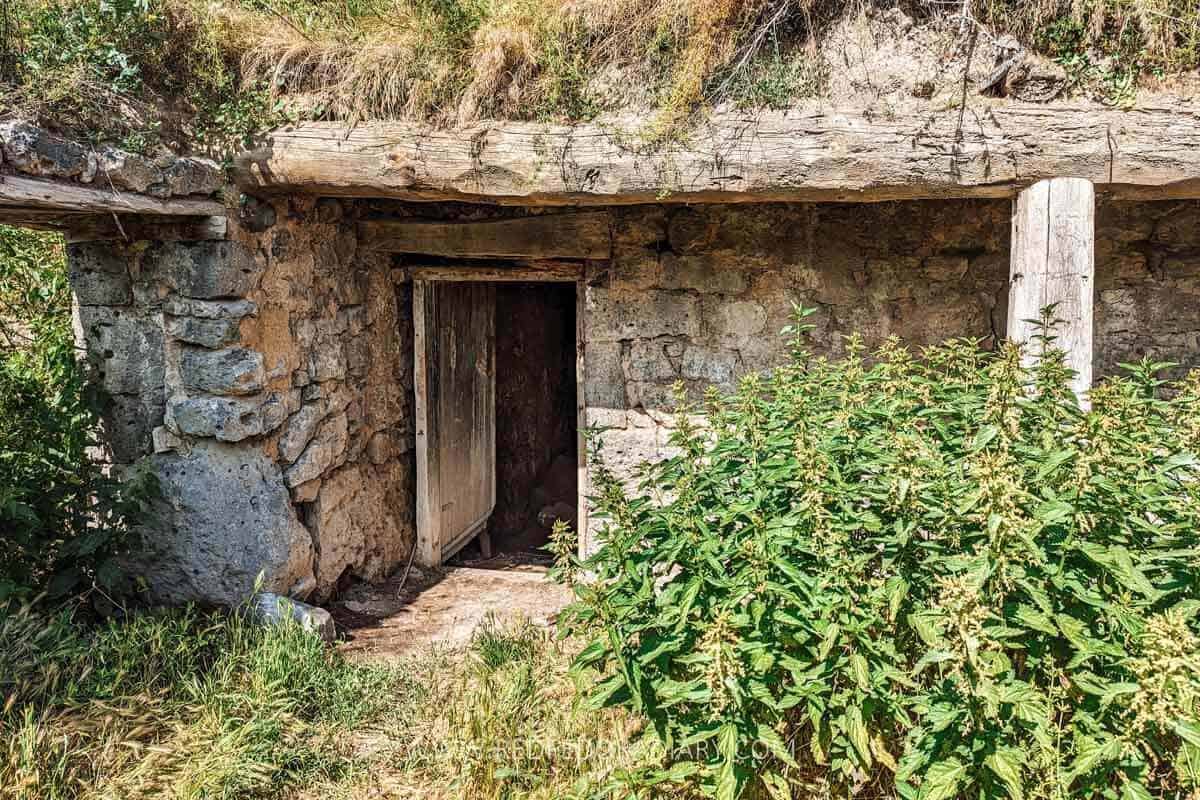
Depending on what climate you like, Samtskhe-Javakheti is a year-round destination. Spring or autumn are optimal periods to visit Samtskhe-Javakheti. If you want to appreciate the abundance of Javakheti lakes, summer is an excellent time with mild weather.
I have mostly visited the area in summer and early autumn, both having ideal temperatures to explore the region. However, no matter the season, I advise packing warm clothes because even if the sun is shining, it could be breezy, and temperatures drop during the evenings.
How to get to Samtskhe-Javakheti
The cities of Samtskhe-Javakheti are well connected with the rest of Georgia. Whether you prefer public transport, a rental car’s freedom, or a taxi’s convenience, reaching Samtskhe-Javakheti is easy.
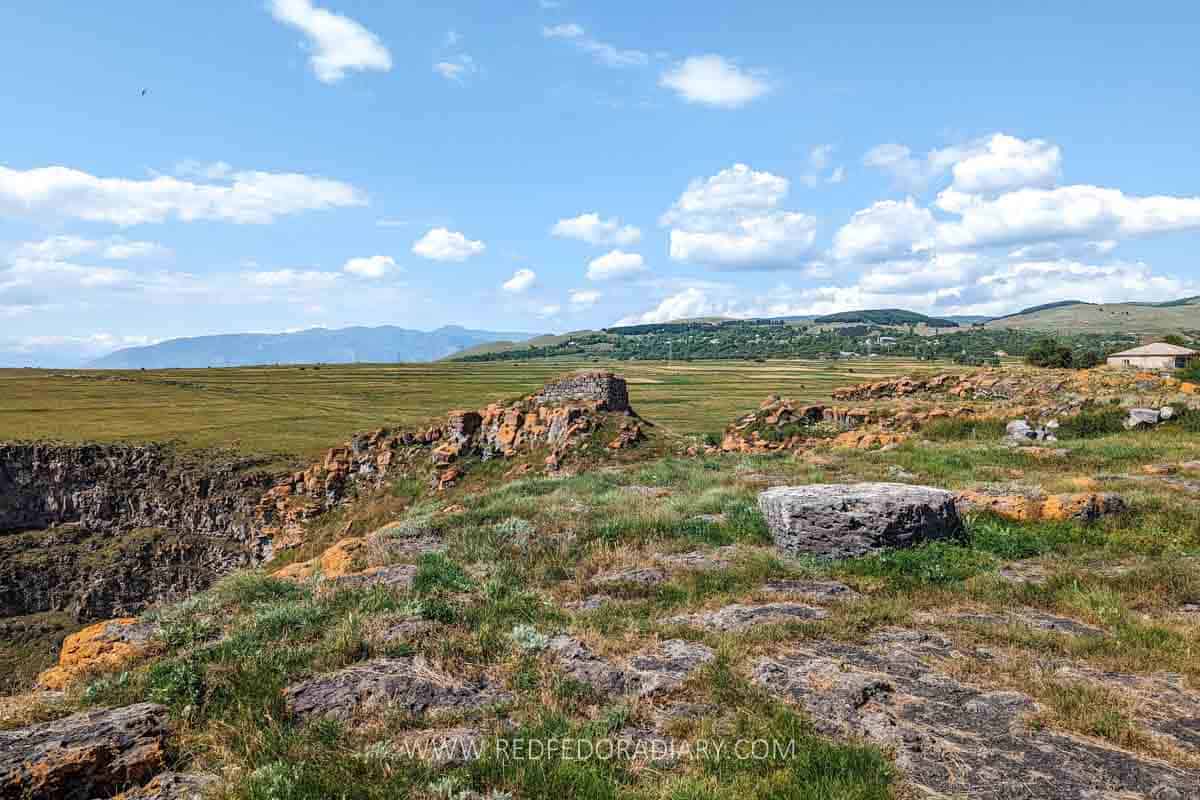
Akhaltsikhe is the largest city within Samtskhe-Javakheti, serving as the primary destination.
For those opting for public transport, marshrutkas (minibusses) regularly depart from Tbilisi’s Didube Bus Station to various destinations in the region, including Borjomi, Bakuriani, Aspindza, Akhalkalaki, Vale, Ninotsminda, Adigeni, and Abastumani. The minibusses leave every hour, starting at 8 am. It takes around 3:30 hours to go from Tbilisi to Akhaltsikhe.
Daily marshrutkas leave from Kutaisi and Batumi to Akhaltiskhe, taking around 4 and 6 hours, respectively. From Batumi, marshutkas typically go through the Zestafoni highway.
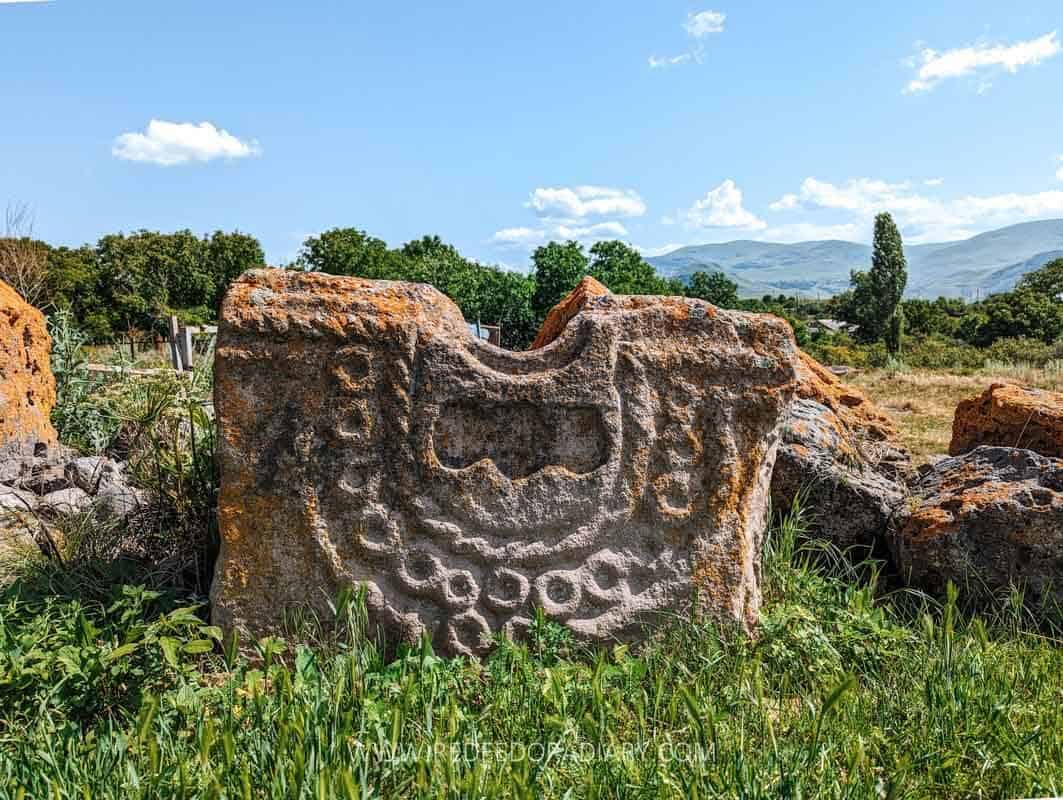
Alternatively, if you prefer the comfort and flexibility of a personal vehicle, you can rent a car at LocalRent for low prices and professional service and enjoy a picturesque drive from Tbilisi to Borjomi and Akhaltsikhe, taking around 2:30 hours. You can hire a car even if you fly into Tbilisi or Kutaisi airports.
In case you don’t feel like driving, GoTrip is an excellent service offering drivers from point A to point B with an unlimited number of stops along the way.
Suggested road trips to visit Samtskhe-Javakheti:
Tbilisi-Borjomi-Akhaltsikhe route covers 220 kilometers. During this road trip, you can explore Borjomi, a mineral water resort encircled with coniferous forest slopes, try mineral spring water right from the source, and learn more about the town’s history and connection to the Russian Imperial family Romanovs in its tiny museum, before reaching Alkhaltsikhe.
Tbilisi-Manglisi-Tsalka-Ninotsminda-Akhalkalaki-Aspindza-Akhaltsikhe path is 240 kilometers long, but it goes through some of the most picturesque, less traveled roads. However, some parts of this route will be closed during winter due to heavy snowfall.

You can stop at Dashbashi or Tsalka Canyon for scenic landscapes with a glass bridge and a diamond-shaped cafe at the canyon. Embrace the diverse culture and history of Tsalka, and hunt down ancient petroglyphs before peaking into Doughbohor village.
You can travel from Kutaisi to Alkhaltiskhe via Borjomi or Bagdati-Sairme-Abastumani road.
From Batumi, a route to Akhaltsikhe goes through Upper Adjara’s Goderdzi Pass and Adigeni. However, it crosses through mountainous terrain and requires a four-wheel-drive vehicle. The road conditions are not ideal either, as it’s unpaved in most places. However, as of summer 2023, some road repair works are underway. I suggest asking about the road conditions in Batumi before departure.
Getting around in the Samtskhe-Javakheti
Because of being a less-traveled destination in Georgia, some areas of the region are not connected with public transport. Therefore, I recommend having your own car to experience and visit Samtskhe-Javakheti and what it offers. While you can use marshrutkas and local taxis to connect between towns and villages, I don’t advise relying solely on them.
Most roads are asphalted and in relatively good condition, especially to those spots I mentioned in the post. For this reason, I always recommend renting a car at LocalRent for convenience and reasonable prices. You can pick up and drop off at various cities in Georgia, including Borjomi, Batumi, and Kutaisi, to name a few.
Alternatively, make Akhaltsikhe your base and do day trips to the region’s main cities and towns from there. The ticket office has a schedule and prices displayed. You can also ask the Tourist Information Office at Akhaltsikhe Castle staff about local transportation or your guesthouse for help.
Where to stay in Samtskhe-Javakheti
While Samtskhe-Javakheti might not be filled with high-class hotels like other areas of the country, it has good accommodation choices.
The major cities, like Akhaltsikhe, Borjomi, Akhalkalaki, and Aspindza, have several options. The problem might be when looking at more remote areas near the lakes.
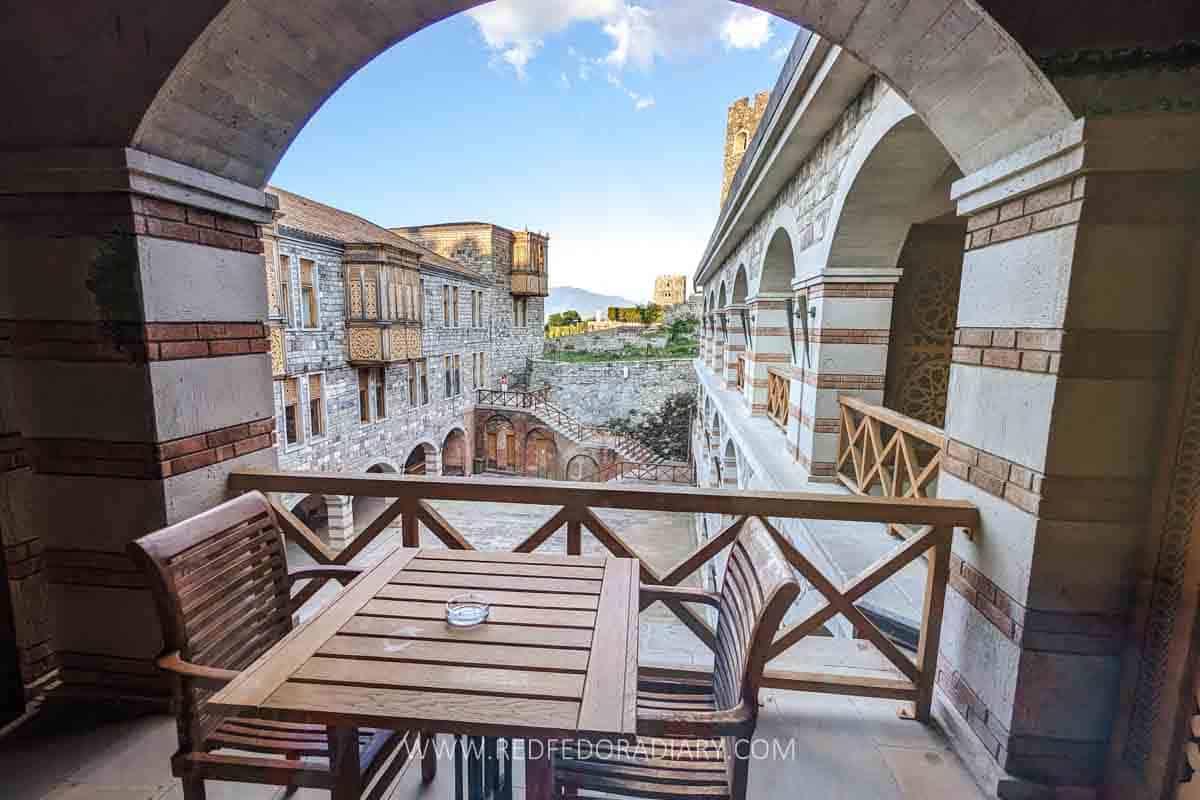
To make your travel planning easier, here are a few suggestions of where to stay in the region.
Gino Wellness Rabat inside the Akhaltsikhe Castle is a mid-range hotel offering a spa and sauna on its premises. Taba Hall is a boutique hotel with a garden, shared lounge, and terrace with a beautiful castle view.
To stay close to Vardzia cave town to explore Khertvisi, consider Vardzia Resort or Vardzia Terrace hotels.
Since Ninotsminda is an excellent location to explore the Javakheti Lakes and Doughobor villages, I recommend staying at Sonya.
For hiking Shaori Fortress or just staying near Paravani or Saghamo Lakes, I advise Family Corner in Ganzani, managed by a lovely Armenian Family offering comfortable accommodation and tasty meals.
Book a room at Amphora Brewery guesthouse for a whole beer-focused experience.
More Samtskhe-Javakheti Content
My Favorite Travel Resources
To ease your travel planning, check out all the posts about Georgia travel. Additionally, here are some of the websites and services I use when preparing for my next adventure anywhere in the world.
✈ Book affordable flights on Skyscanner, a platform that shows the best flight deals.
🚫 Get compensation for up to 700$ with Airhelp if your flight was canceled or delayed within the last 3 years.
🚗 Rent a car at Local Rent for affordable prices and convenient service.
❣ Pre-book a private car transfer with GoTrip from Tbilisi Airport to your hotel or any other city across Georgia.
💻 Get a VPN from Surfshark to protect your devices from hackers when using public Wi-Fi when traveling.
📱 Install the Airalo app, which provides local eSIMs for a more affordable internet connection when traveling. Get 3 USD with code: BAIA2592.
💸 Use Wise to withdraw money in local currency without hidden fees and avoid high exchange rates. On top, you might get a Visa or Mastercard debit card.
🍷 For some of the best, expat-designed wine tours check out Eat!ThisTours. Get a 5% discount with code RFD5.
🏨 Find budget-friendly deals on all sorts of accommodation types on Booking.com.
🩺 Buy the most flexible and budget-friendly travel insurance, SafetyWing, covering COVID.
☀ Book in advance some of the best city walks, cultural experiences, and day tours to maximize your stay and experience here.
